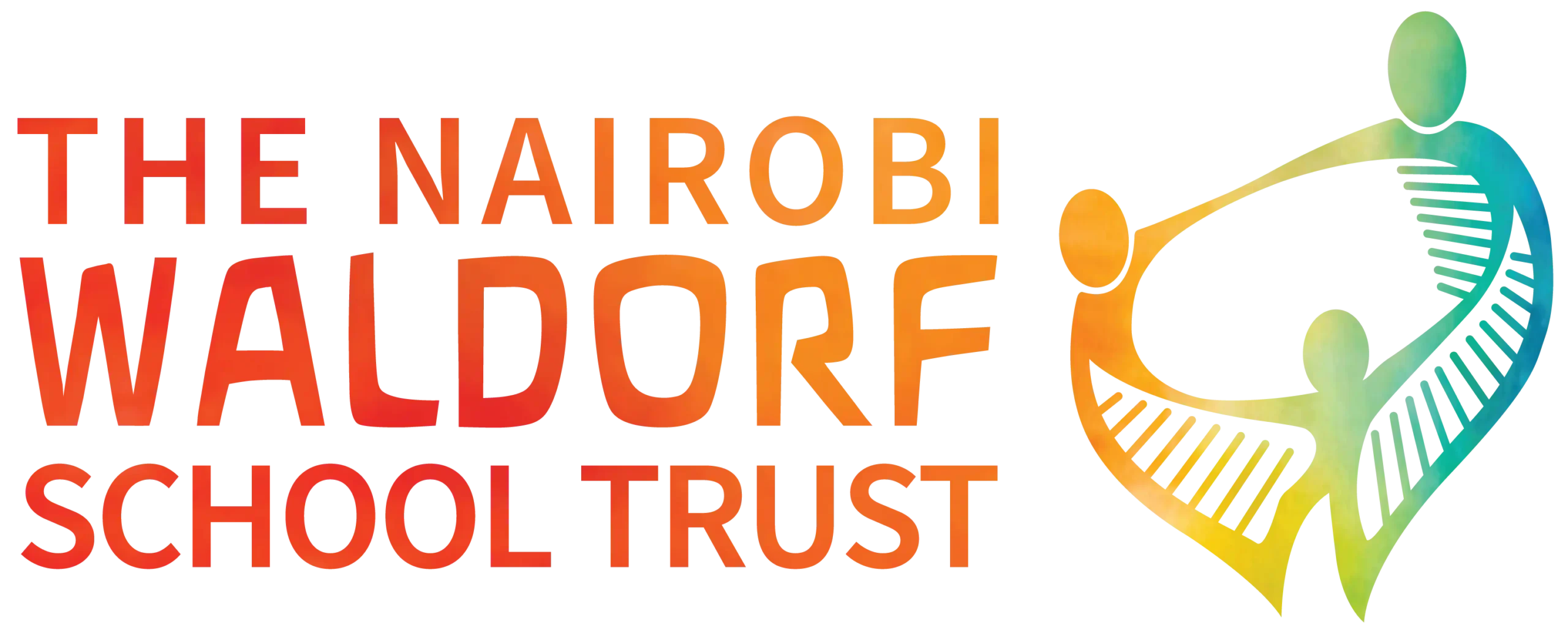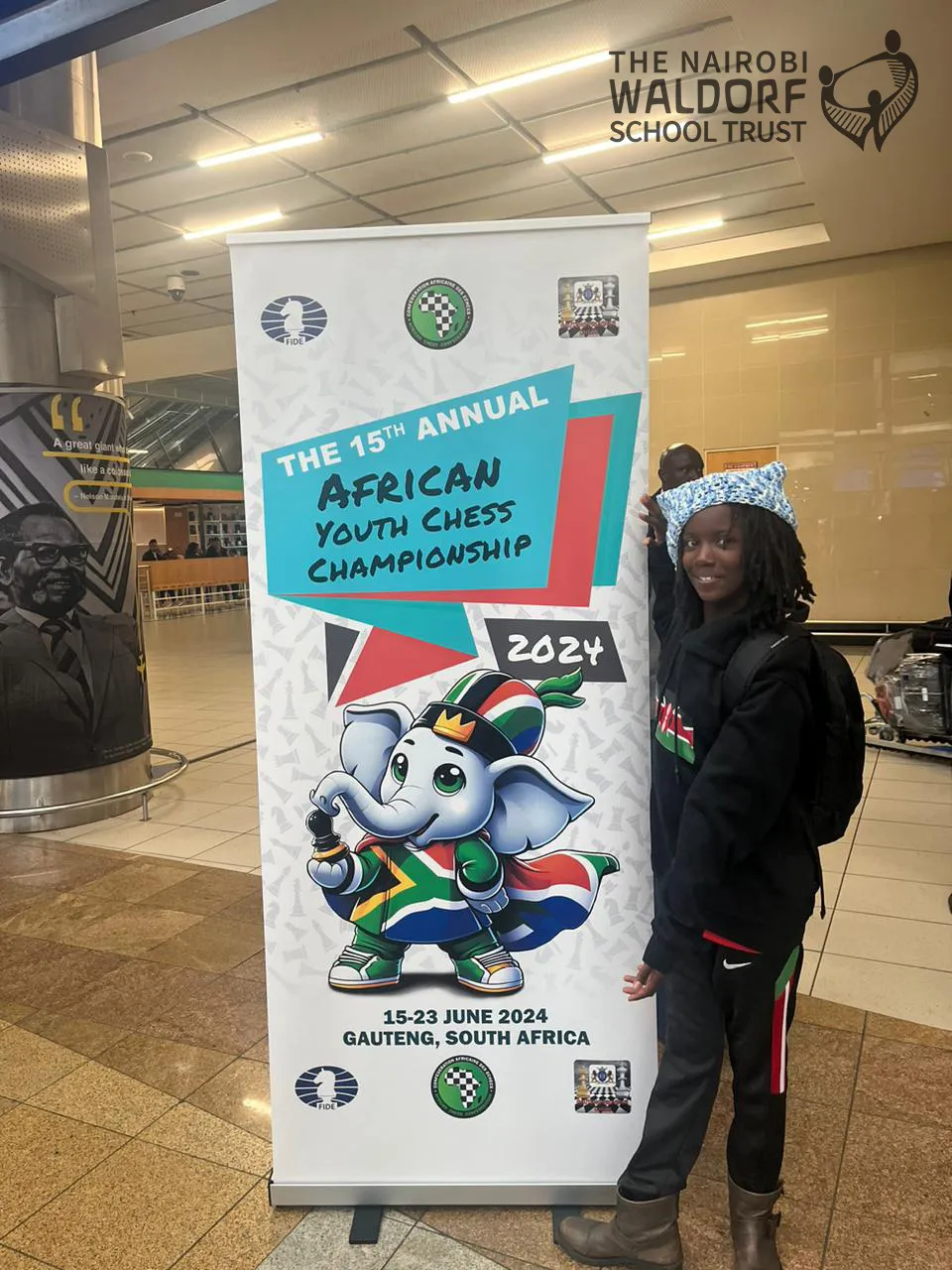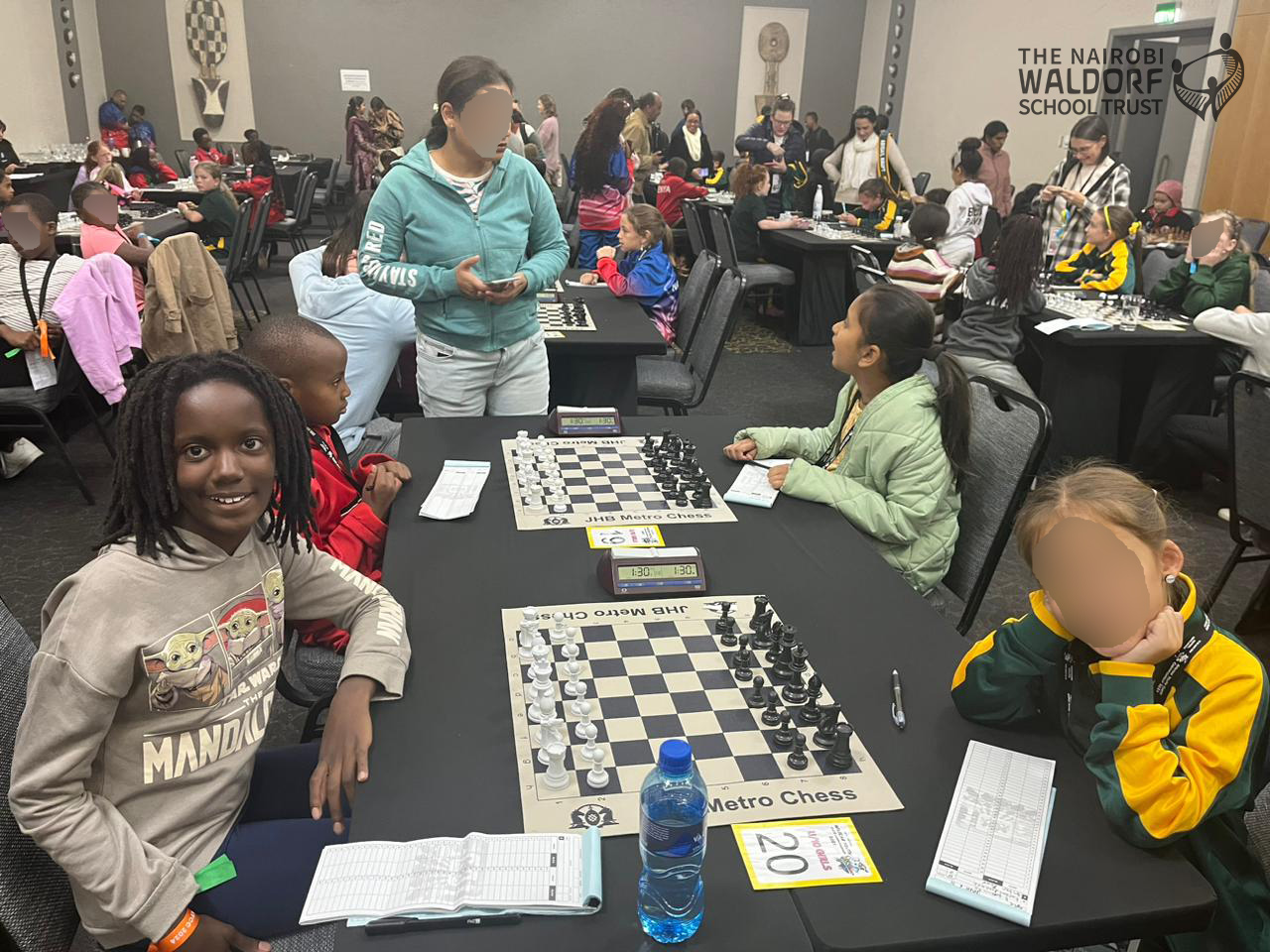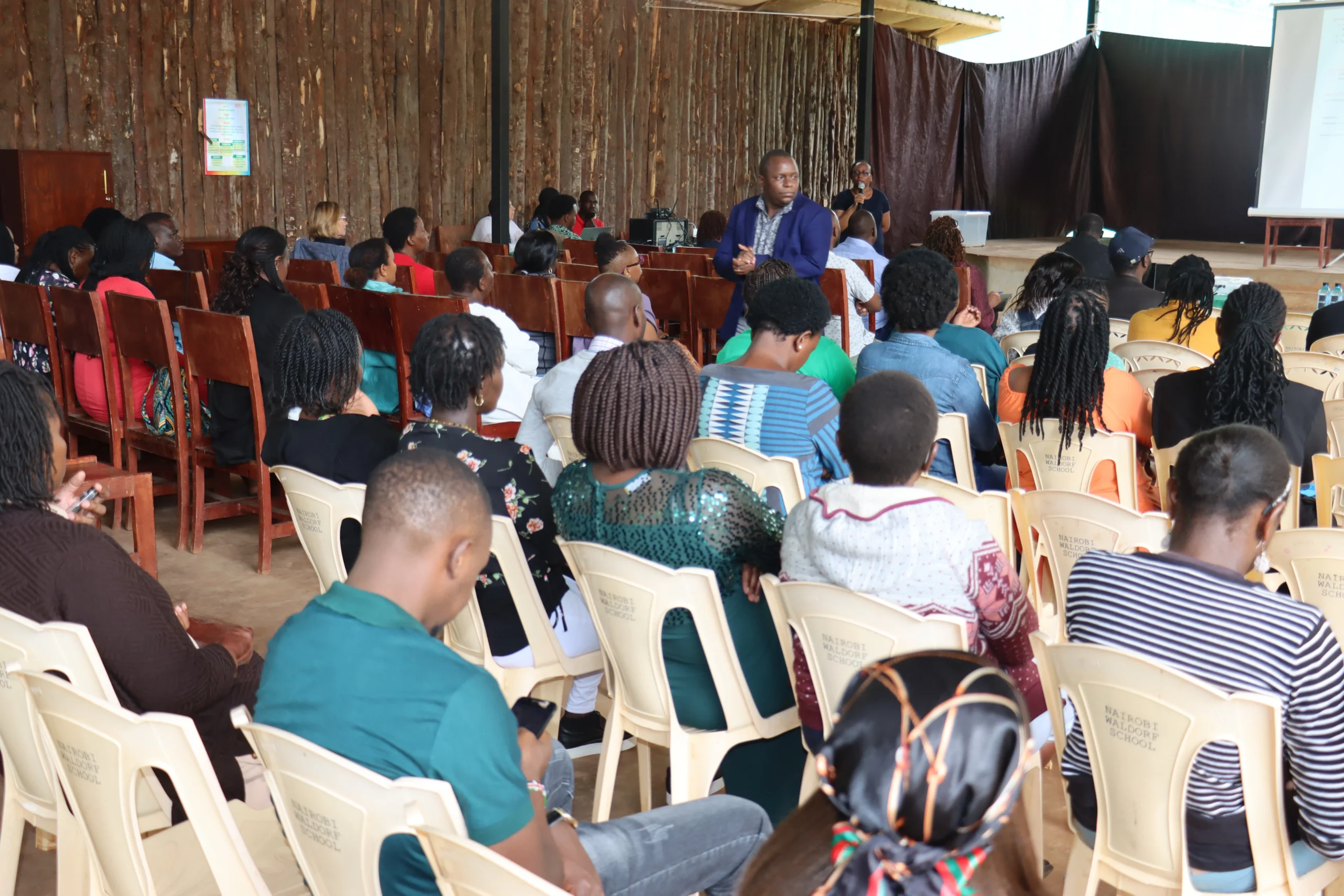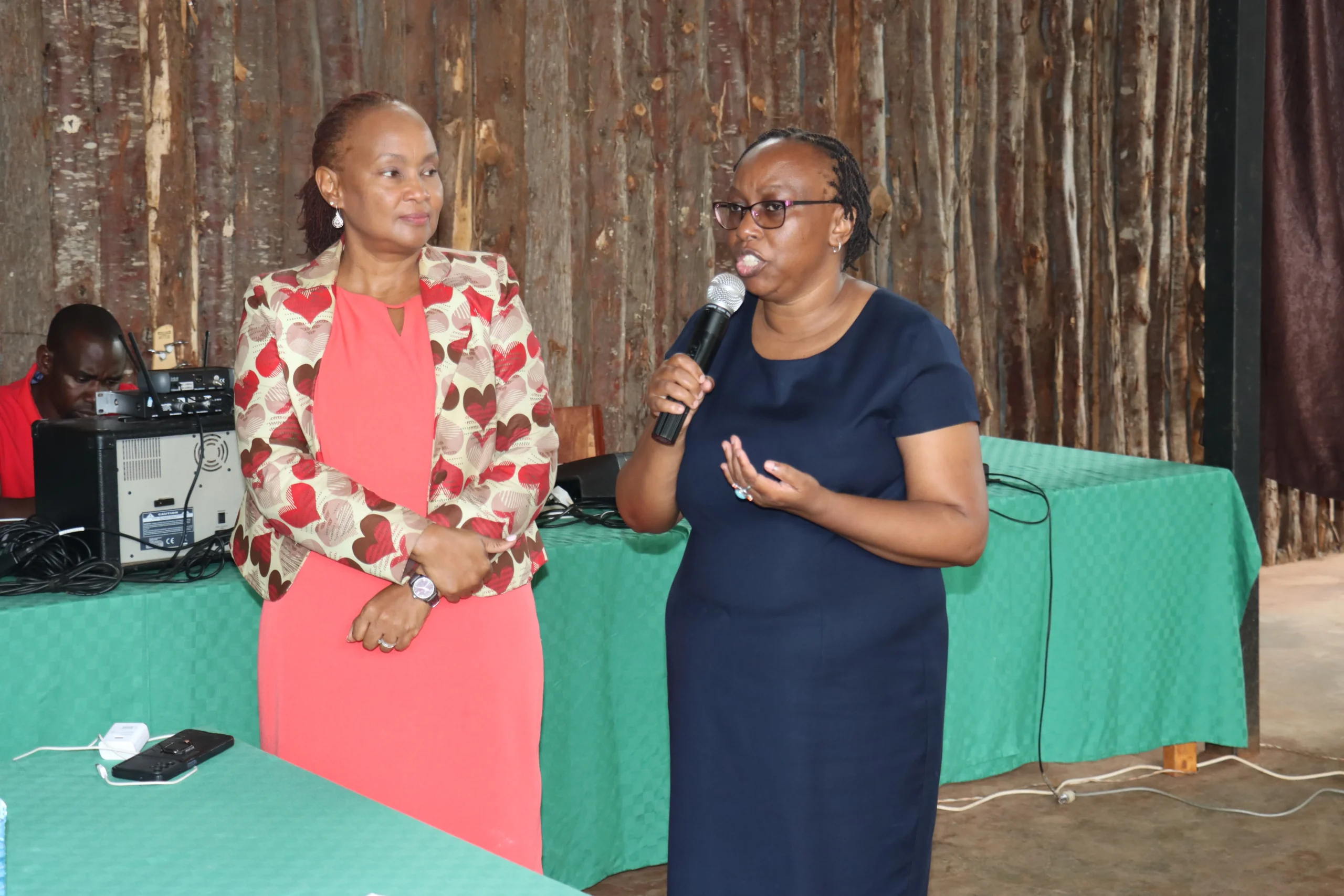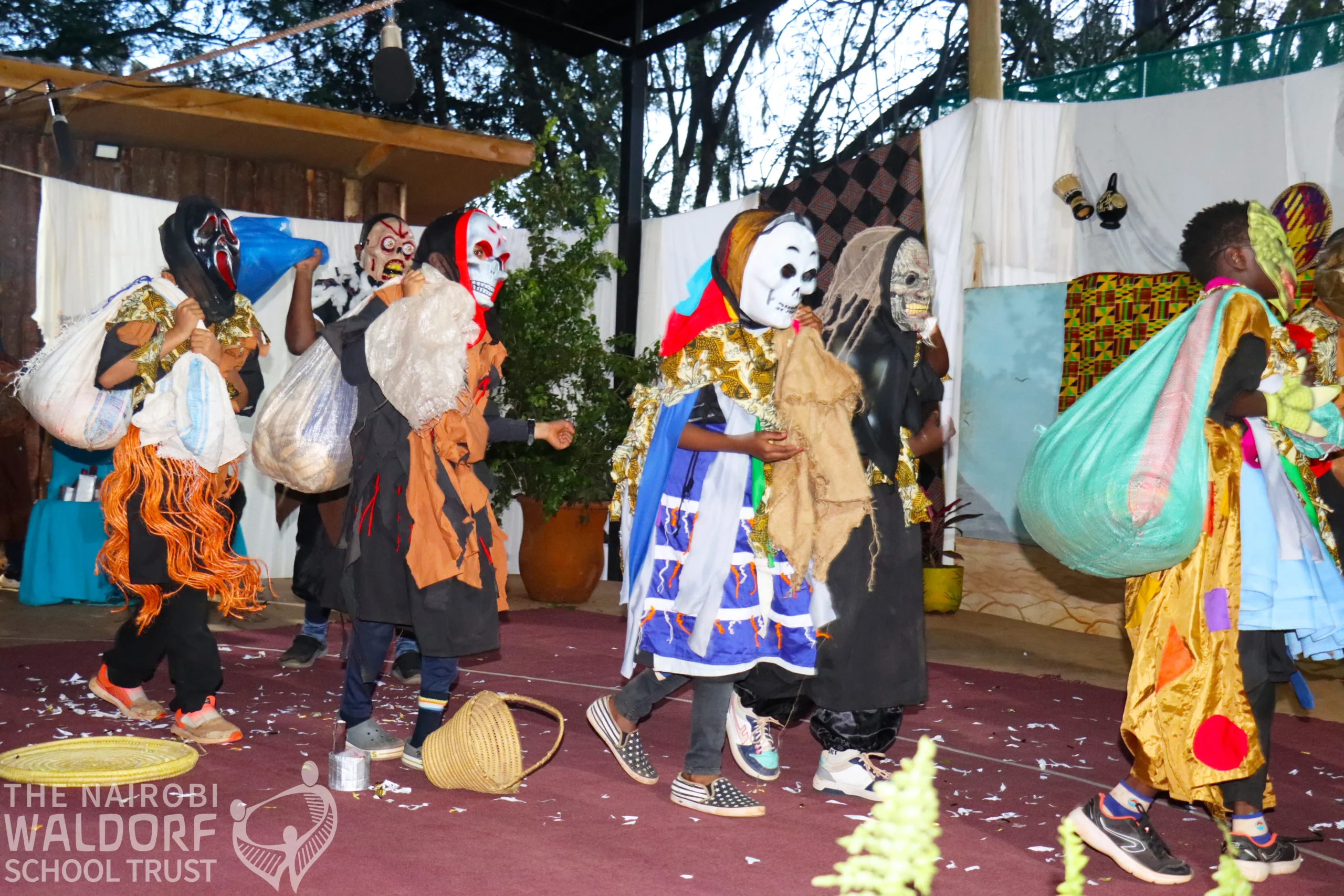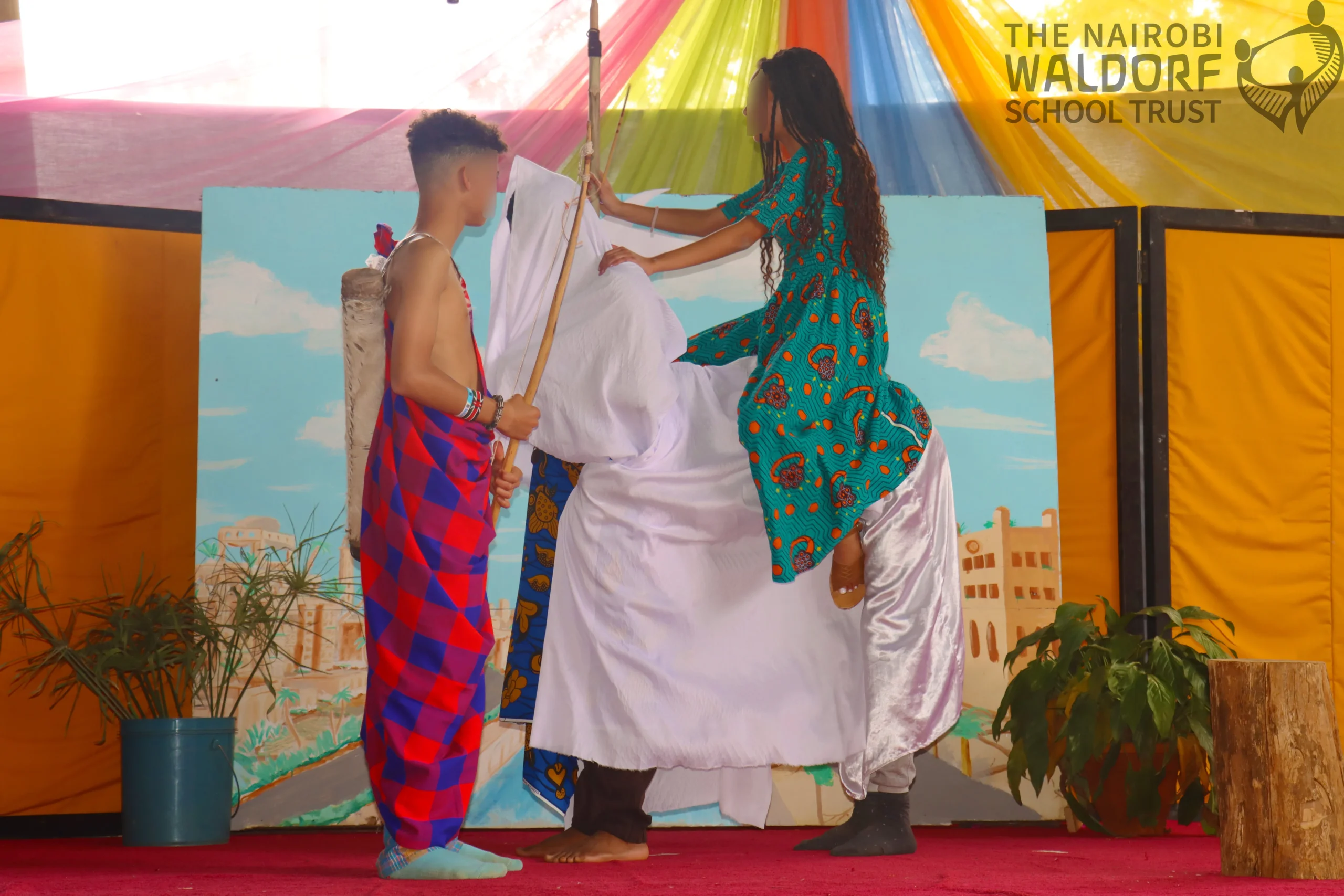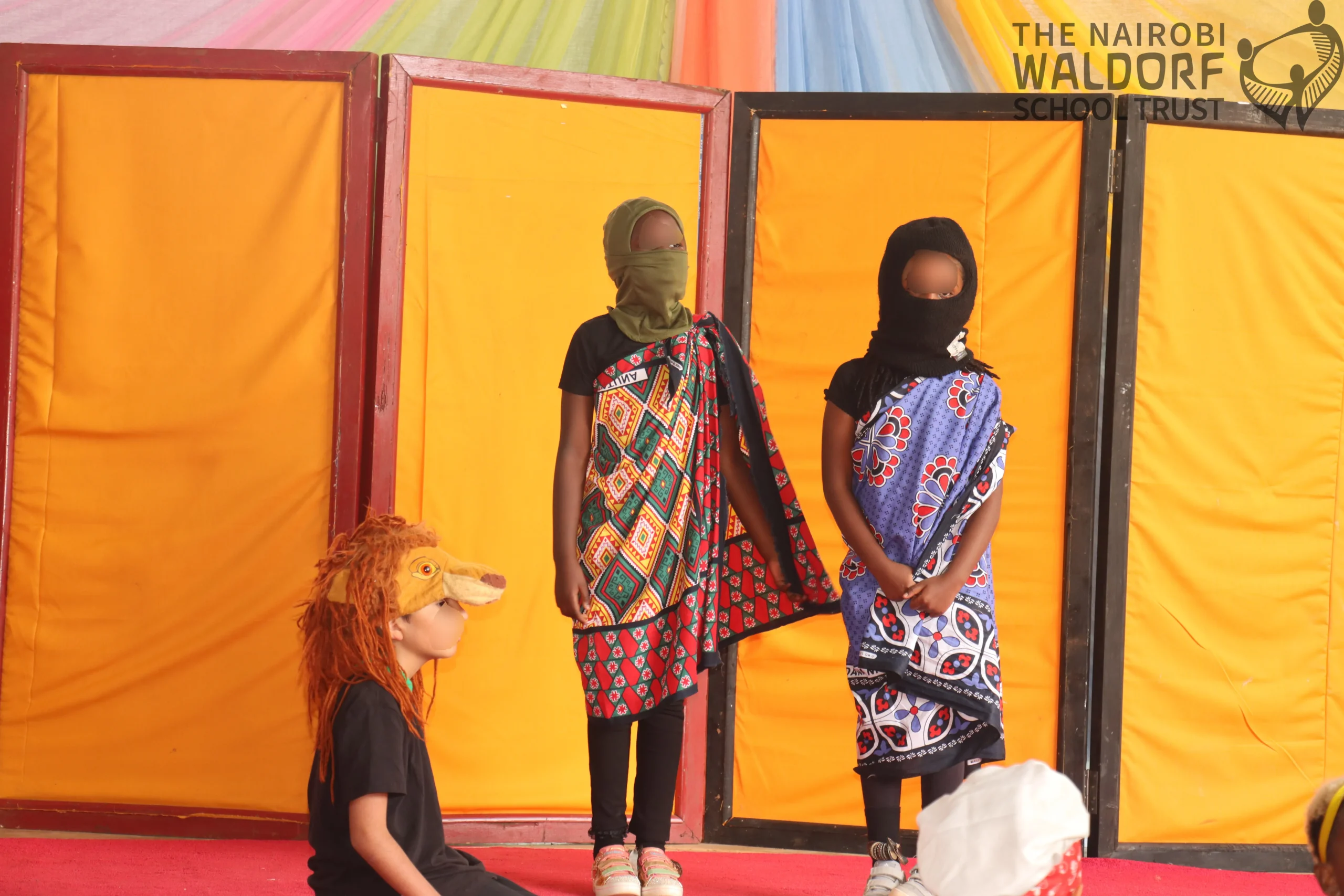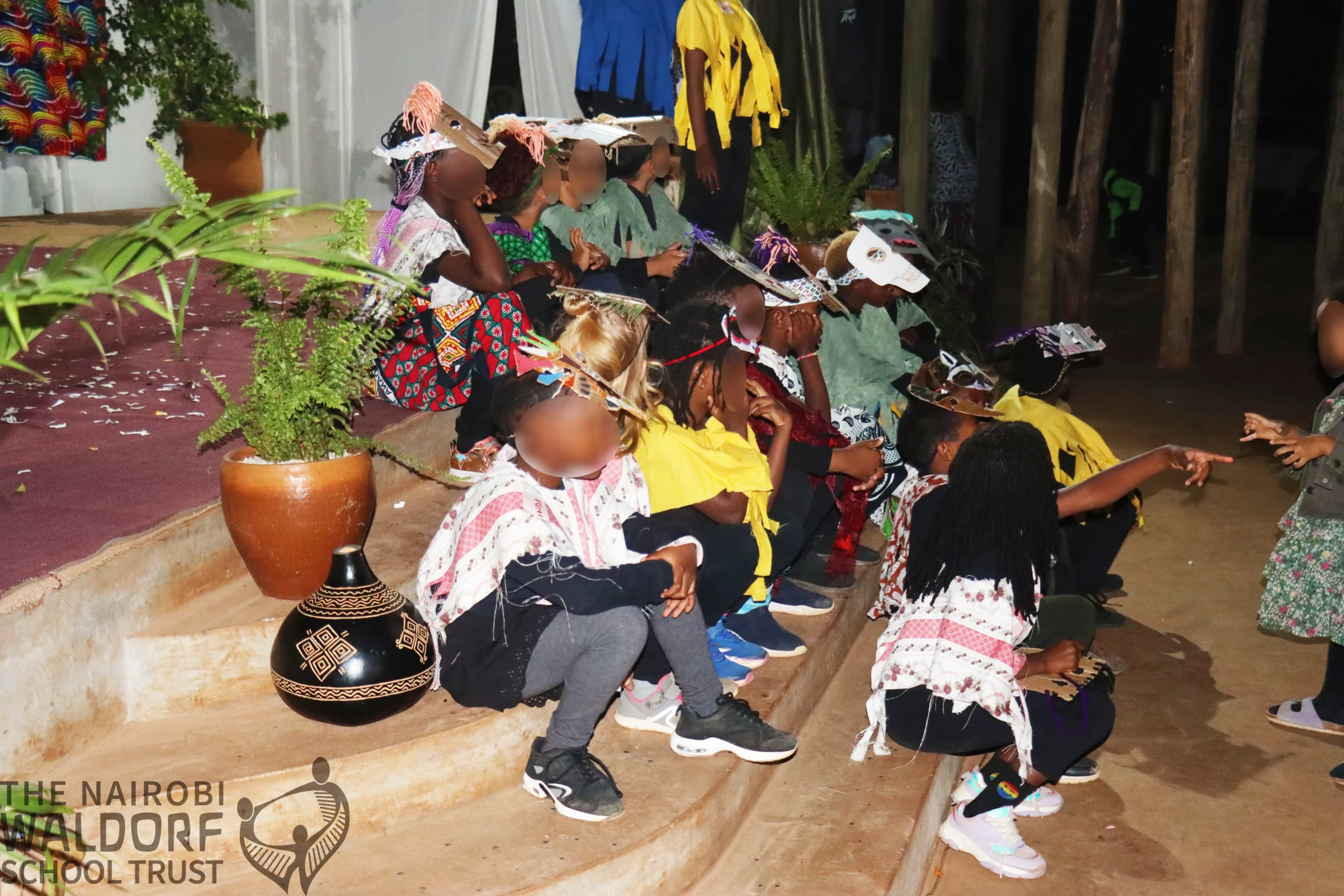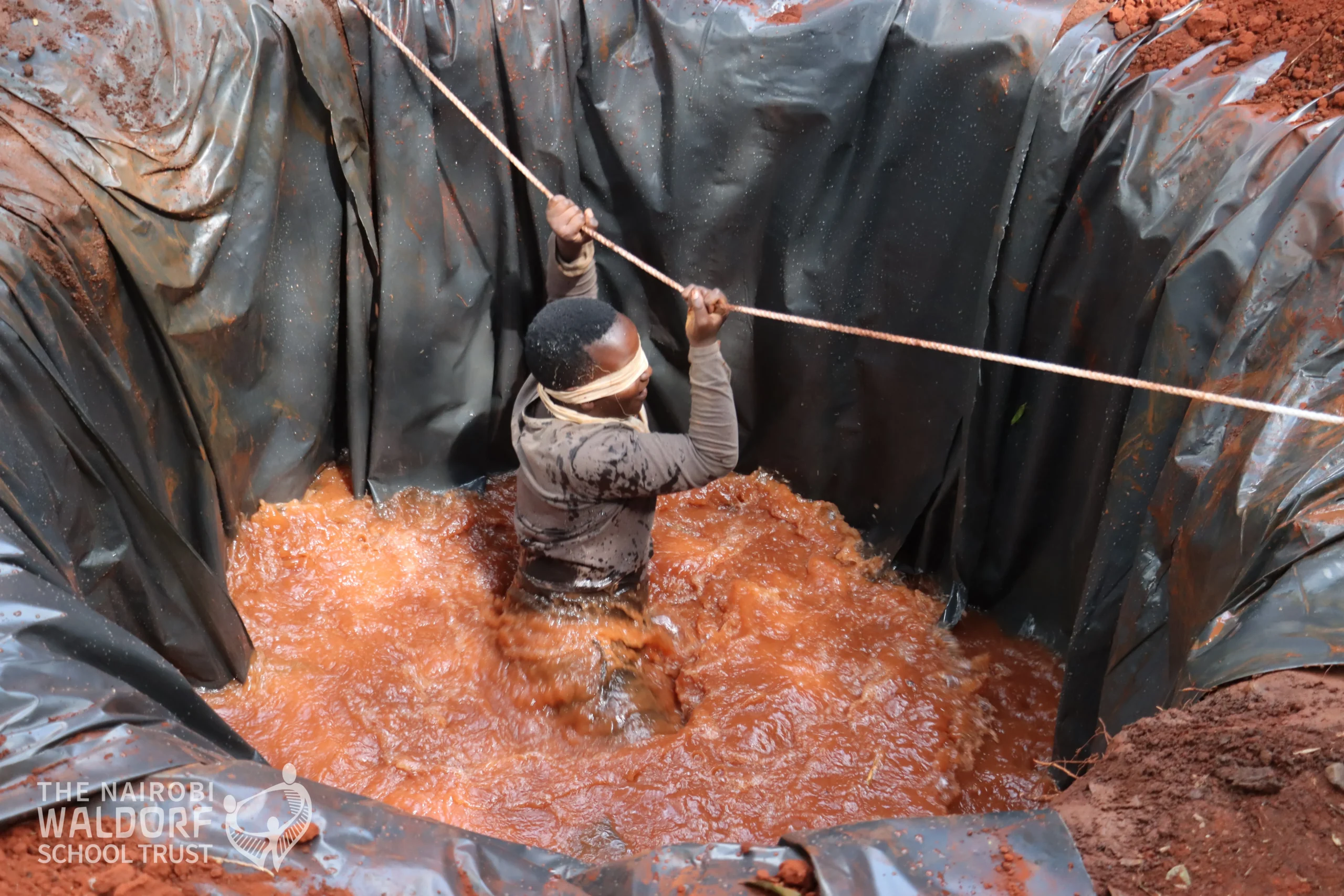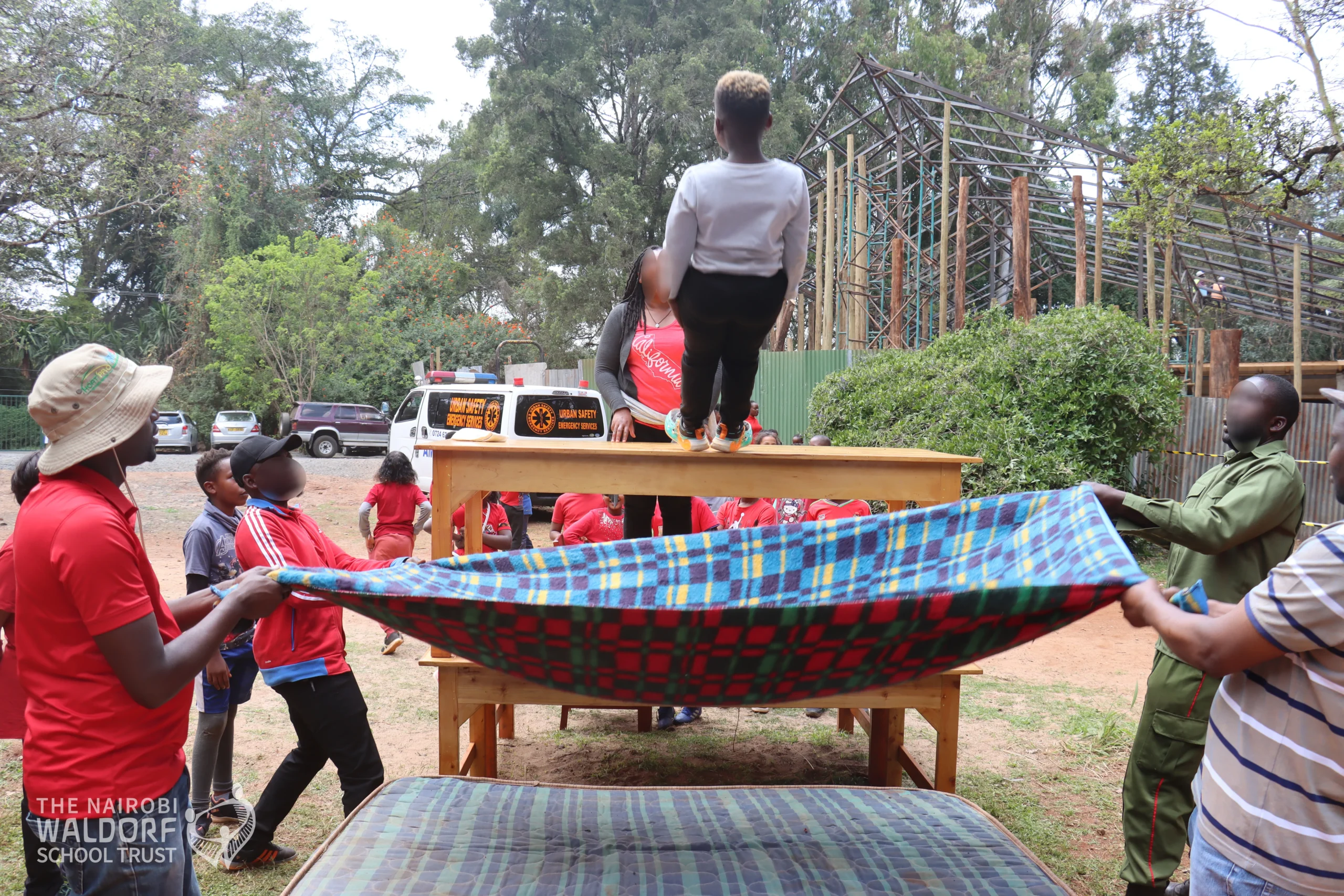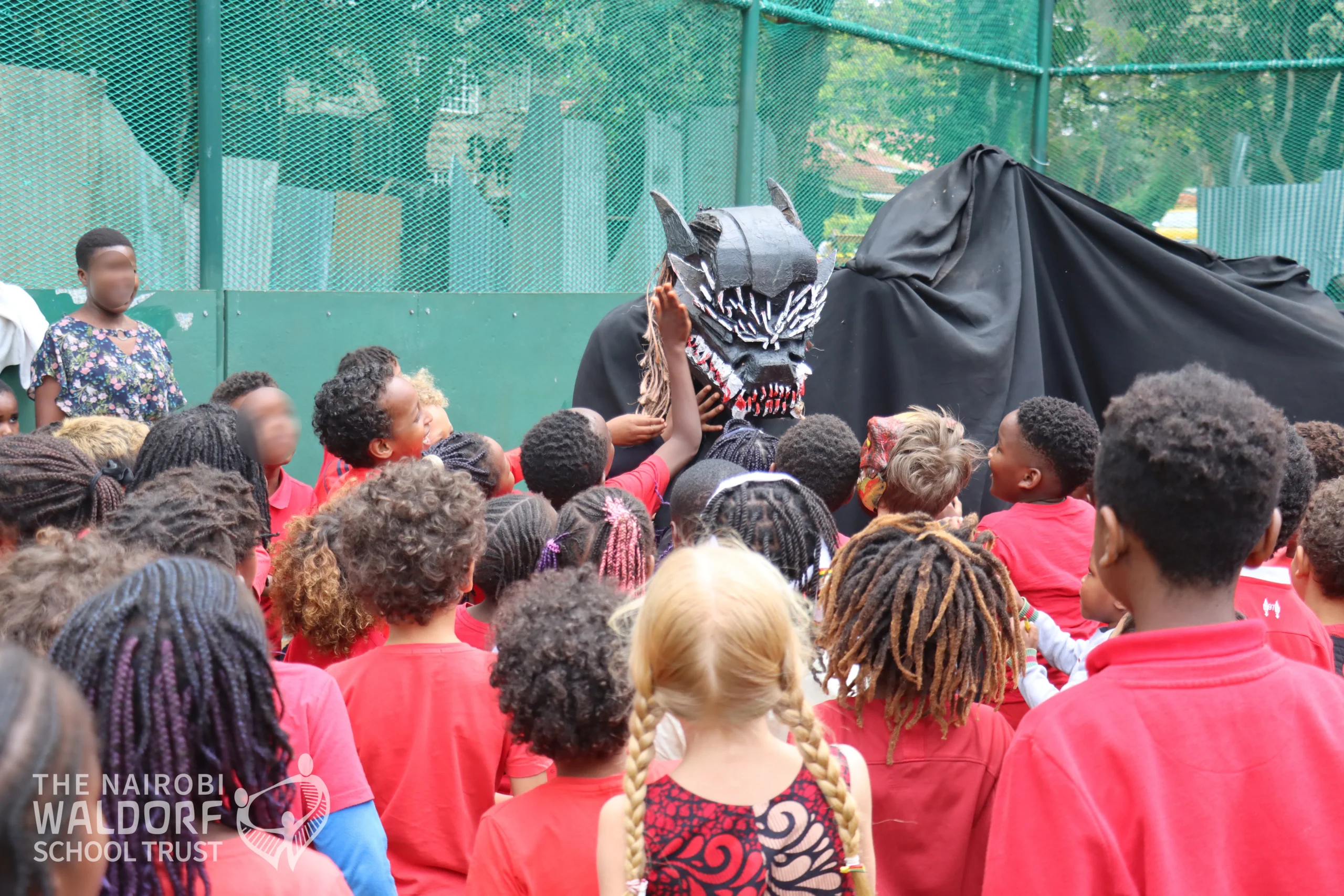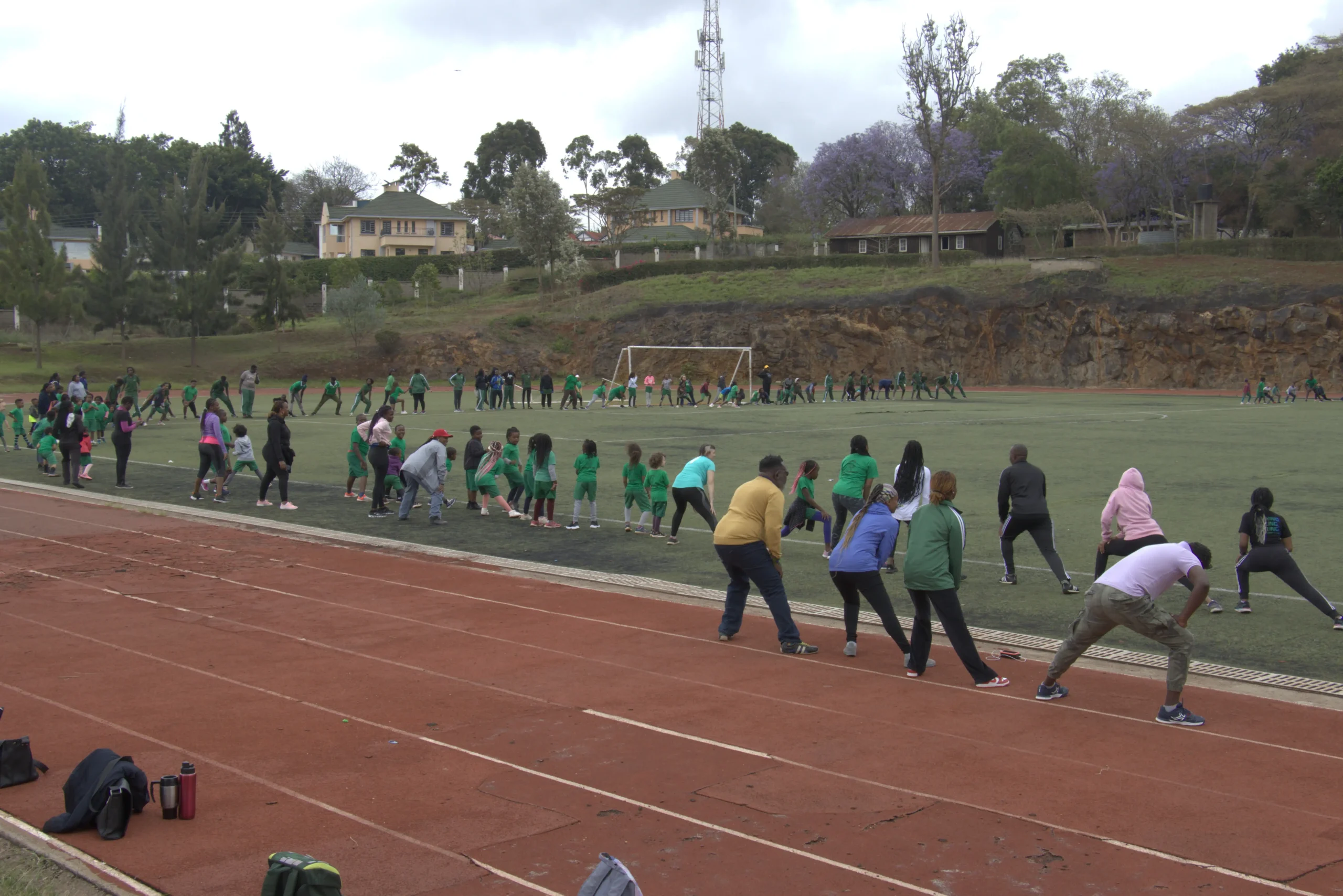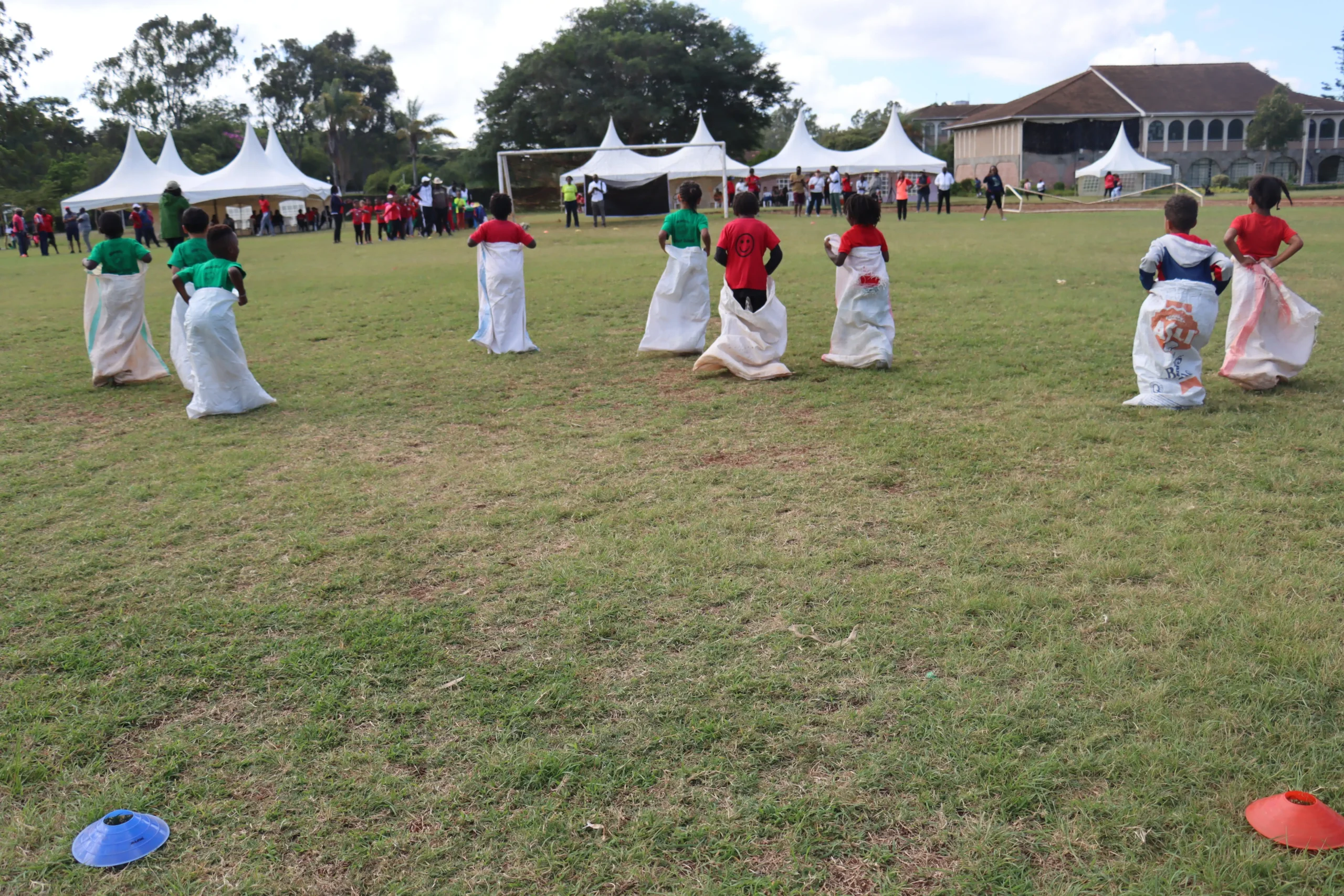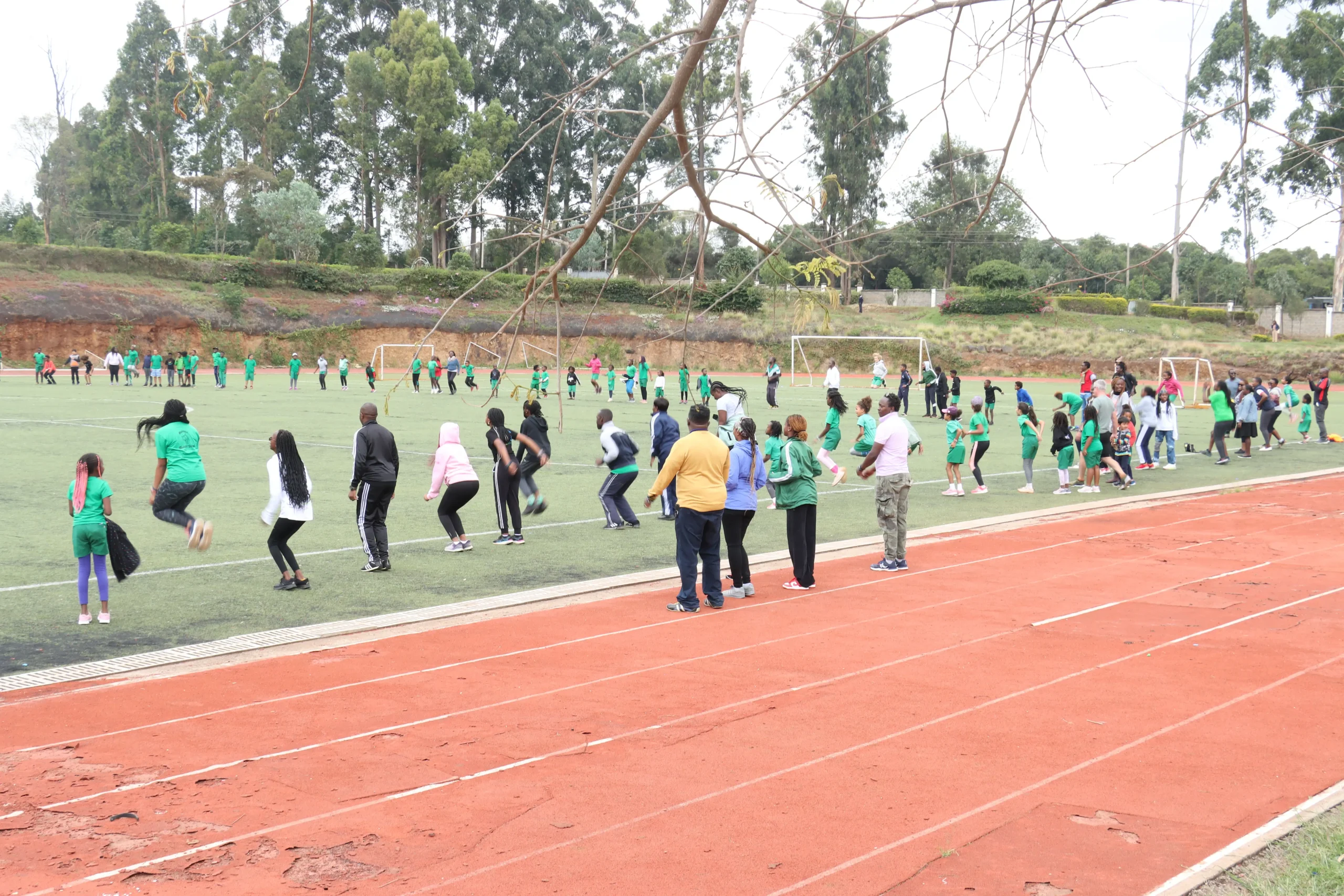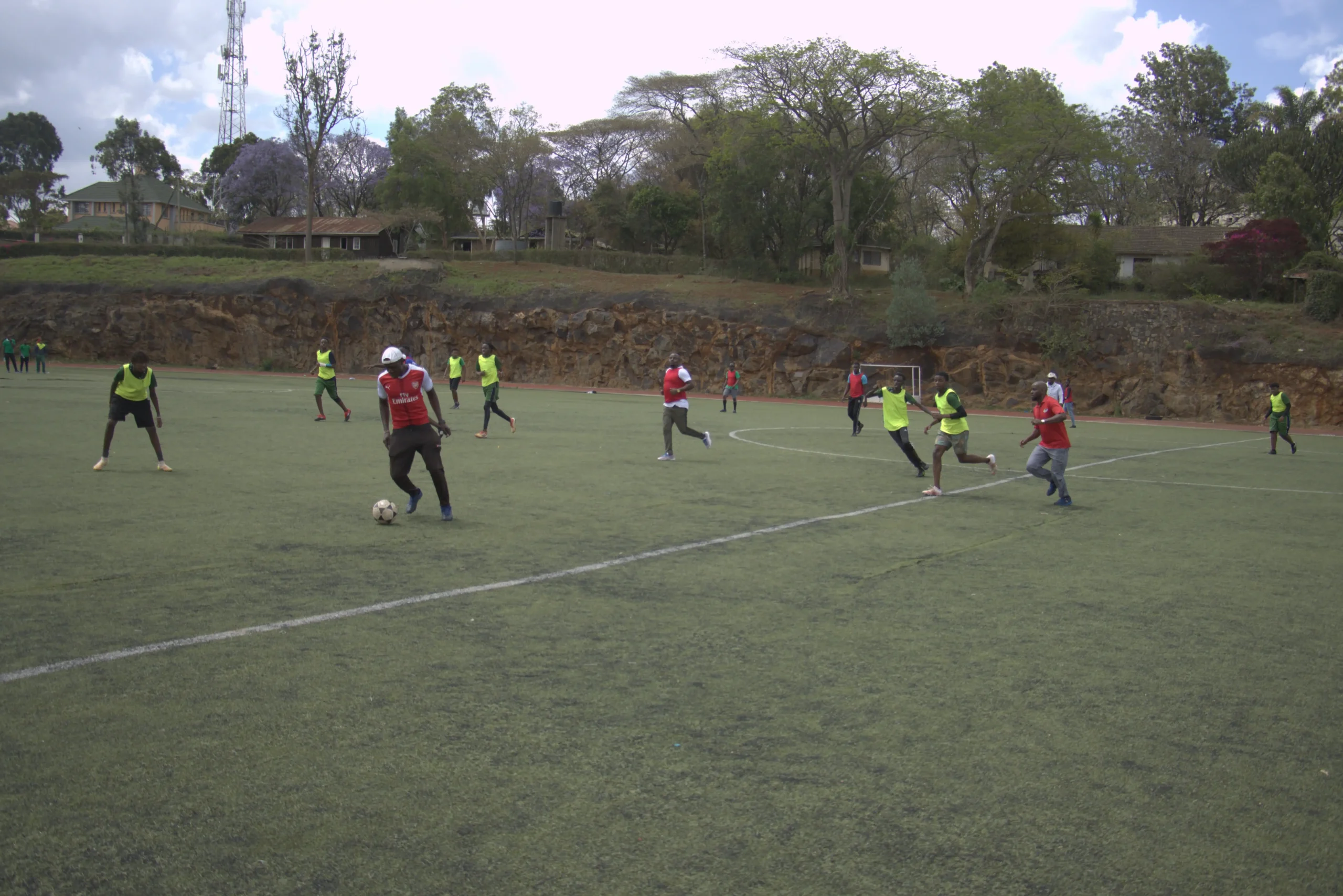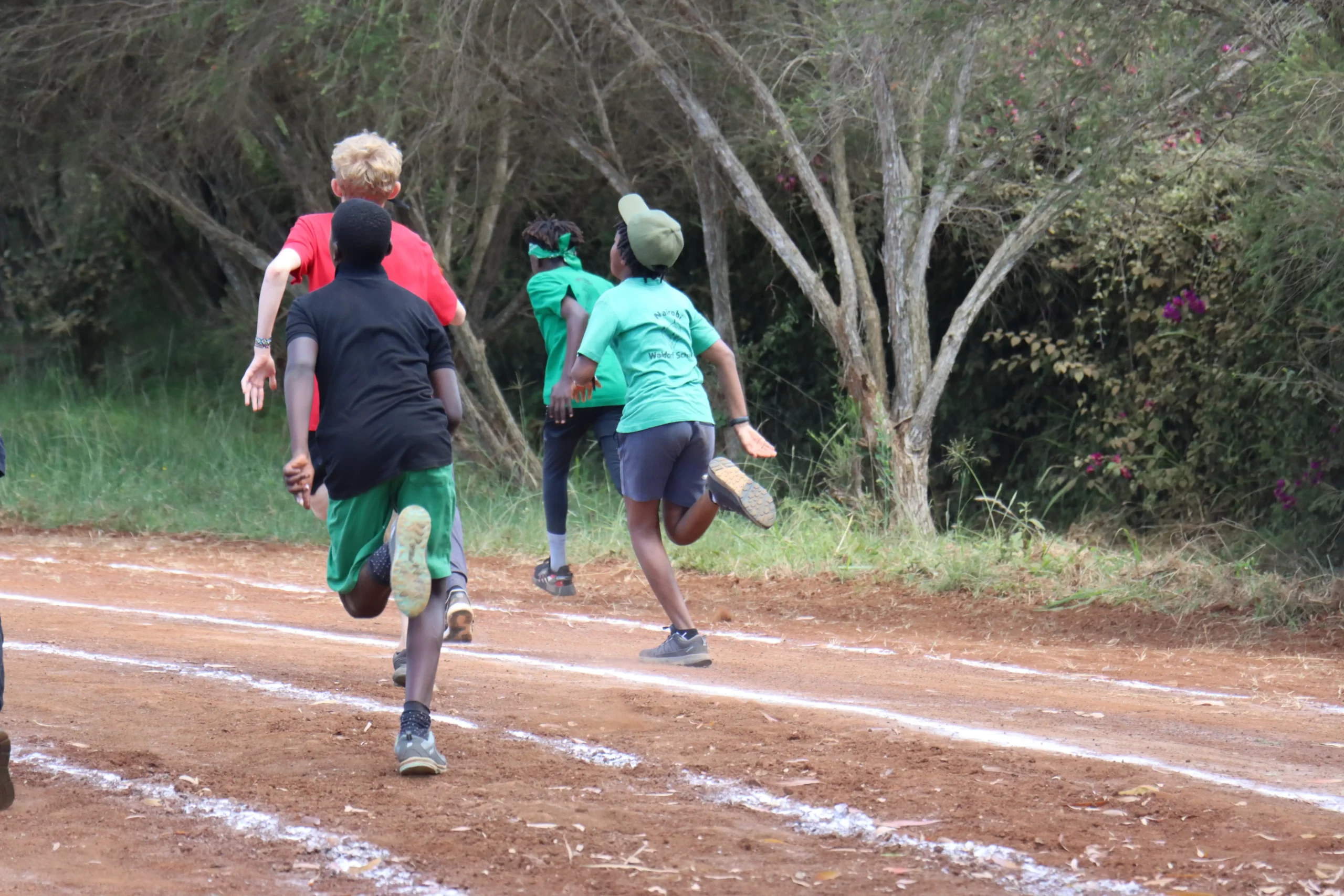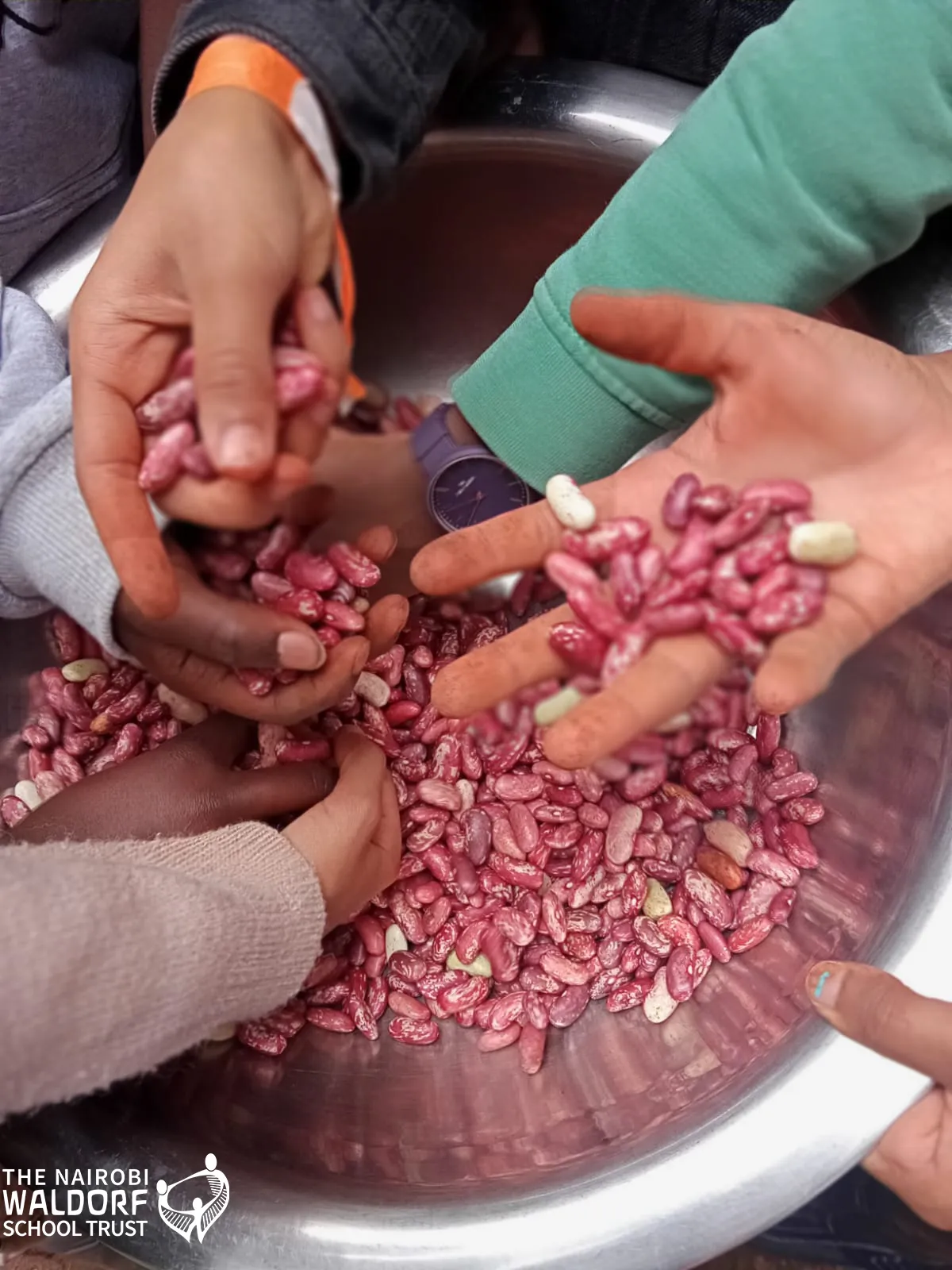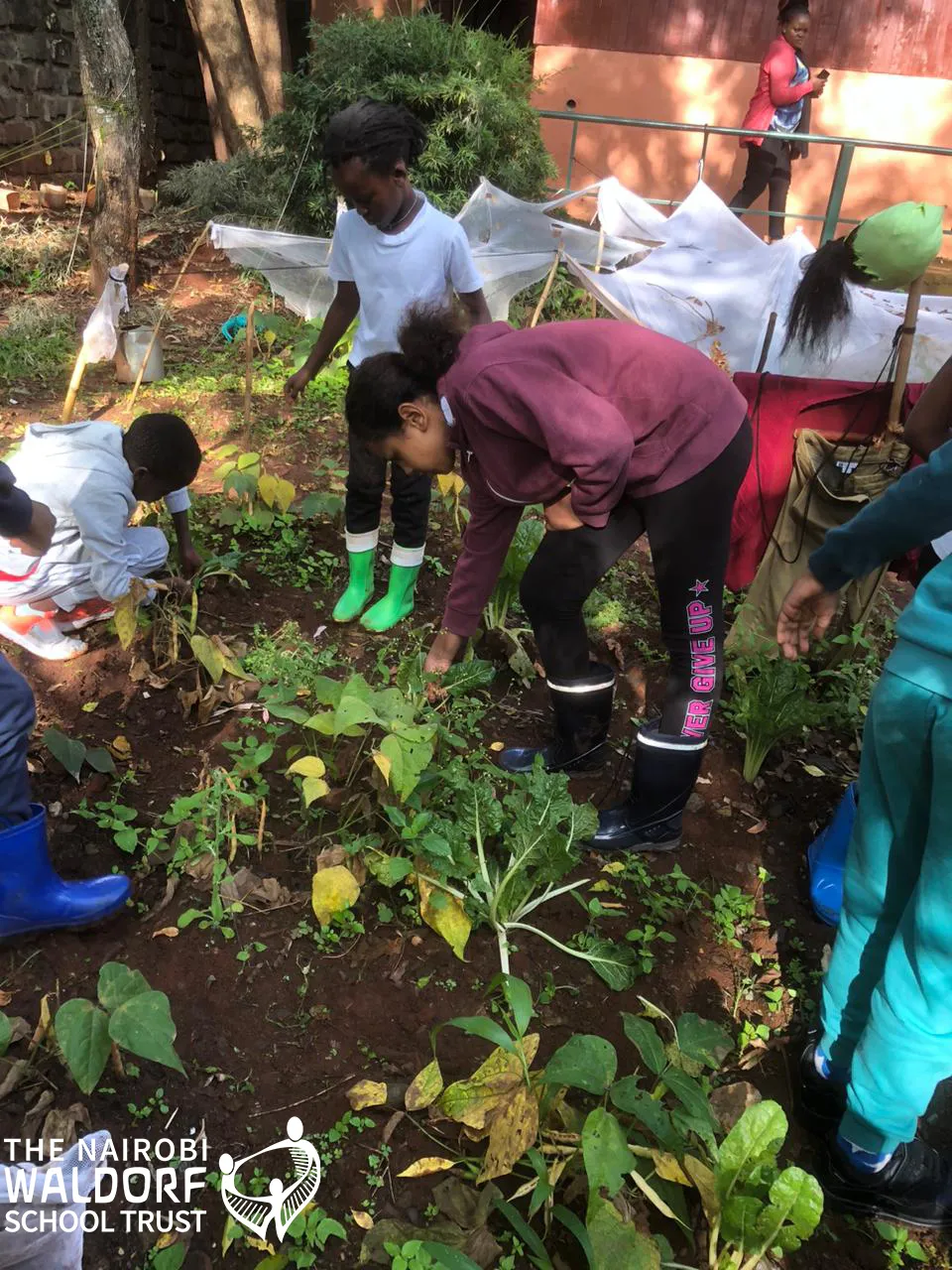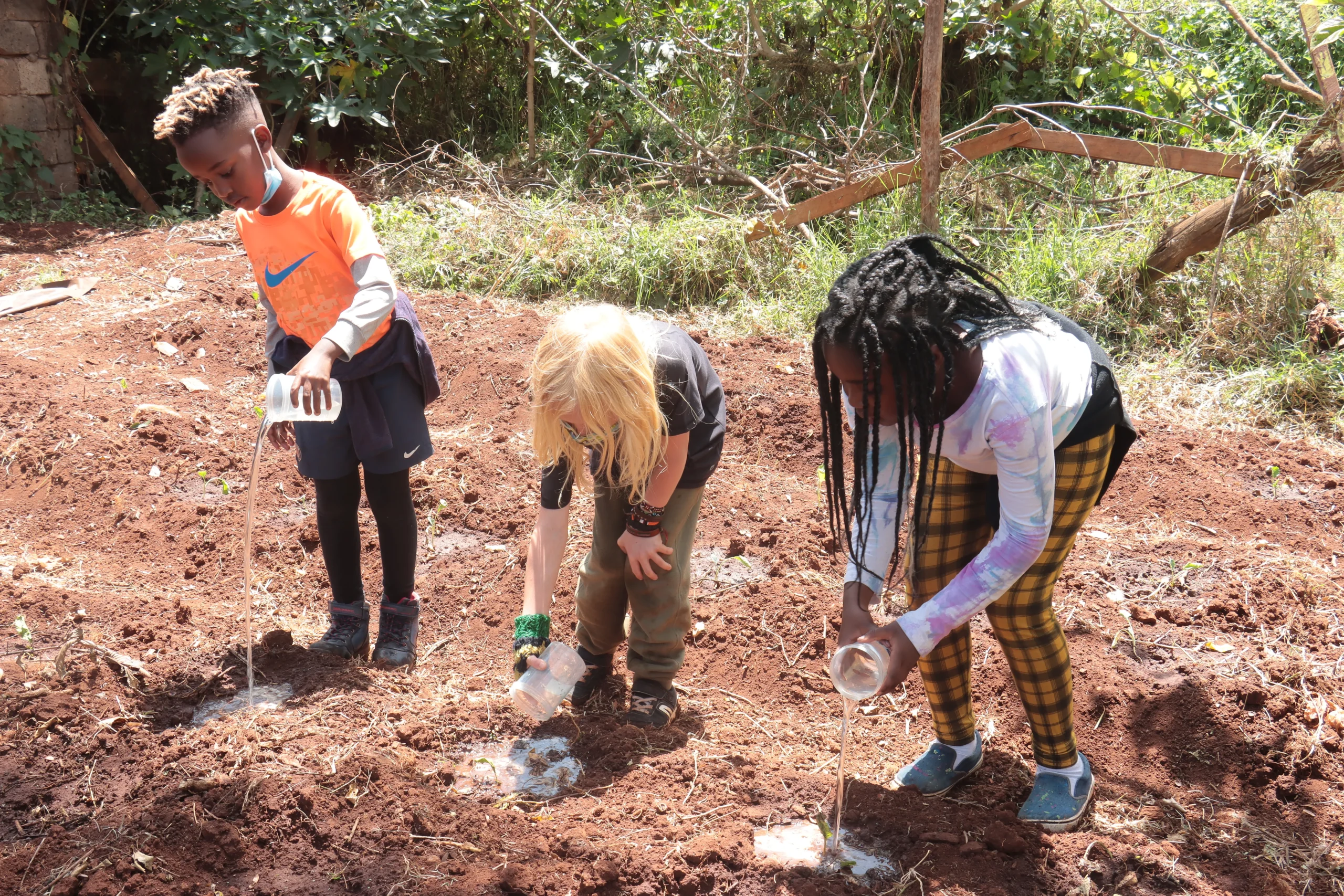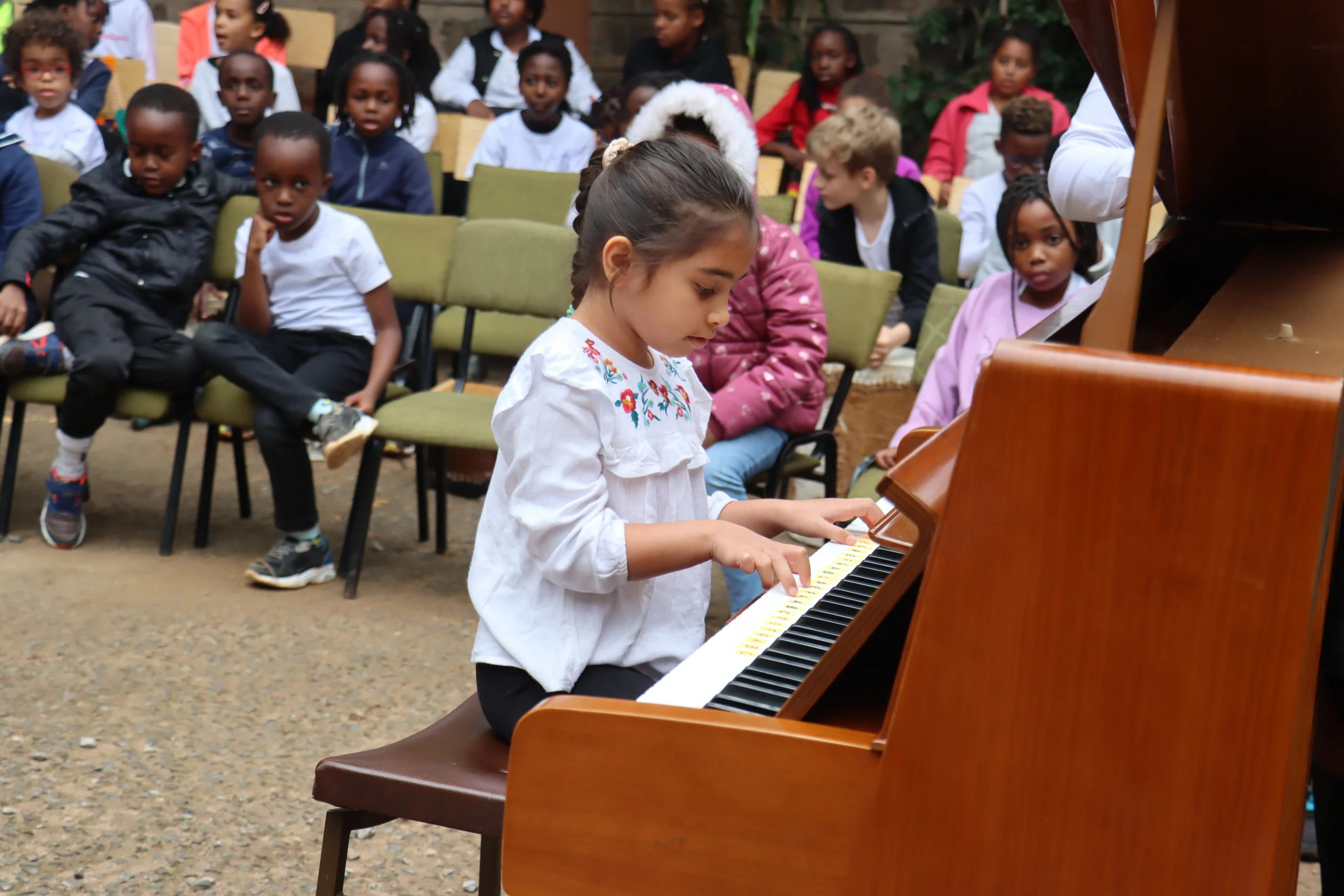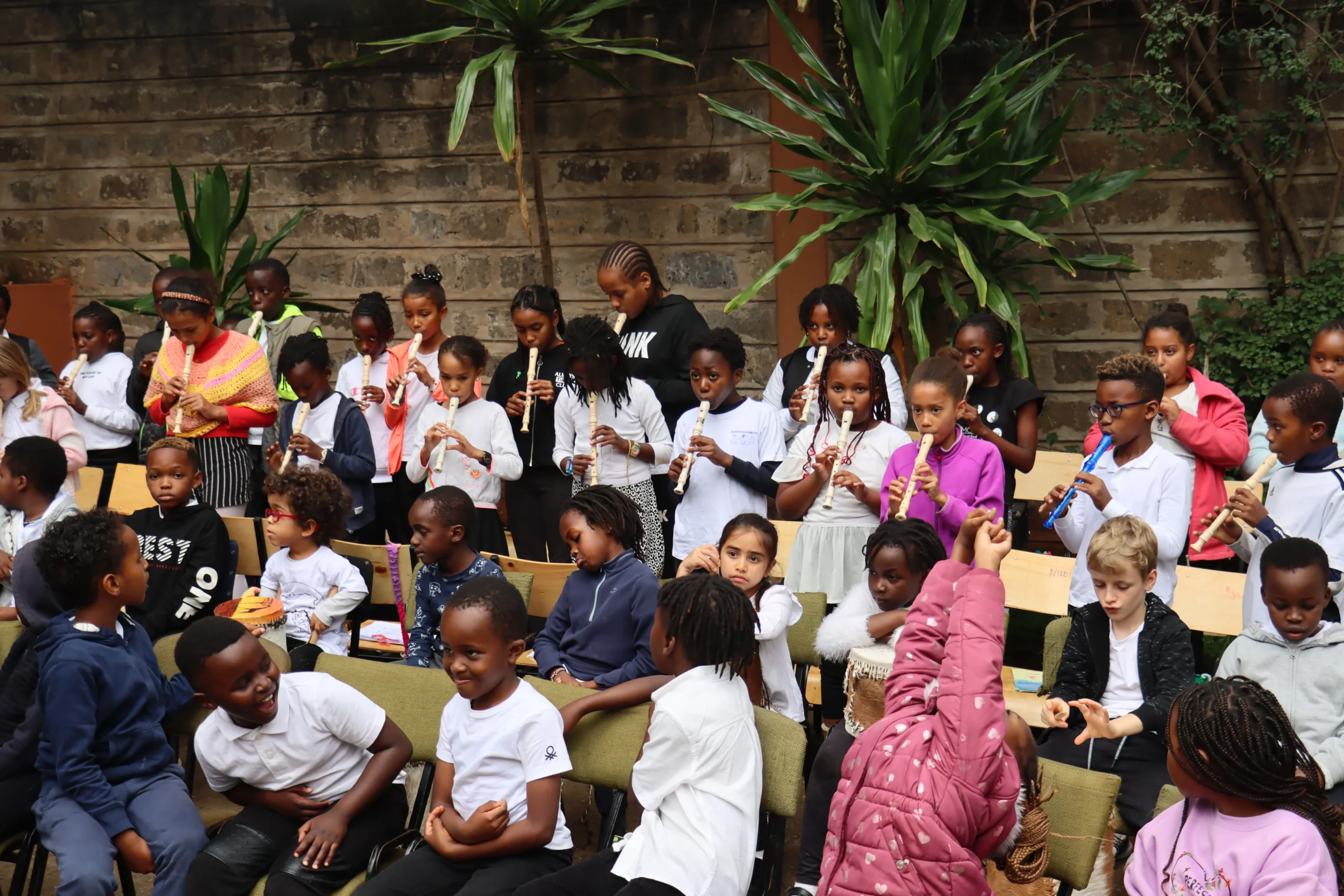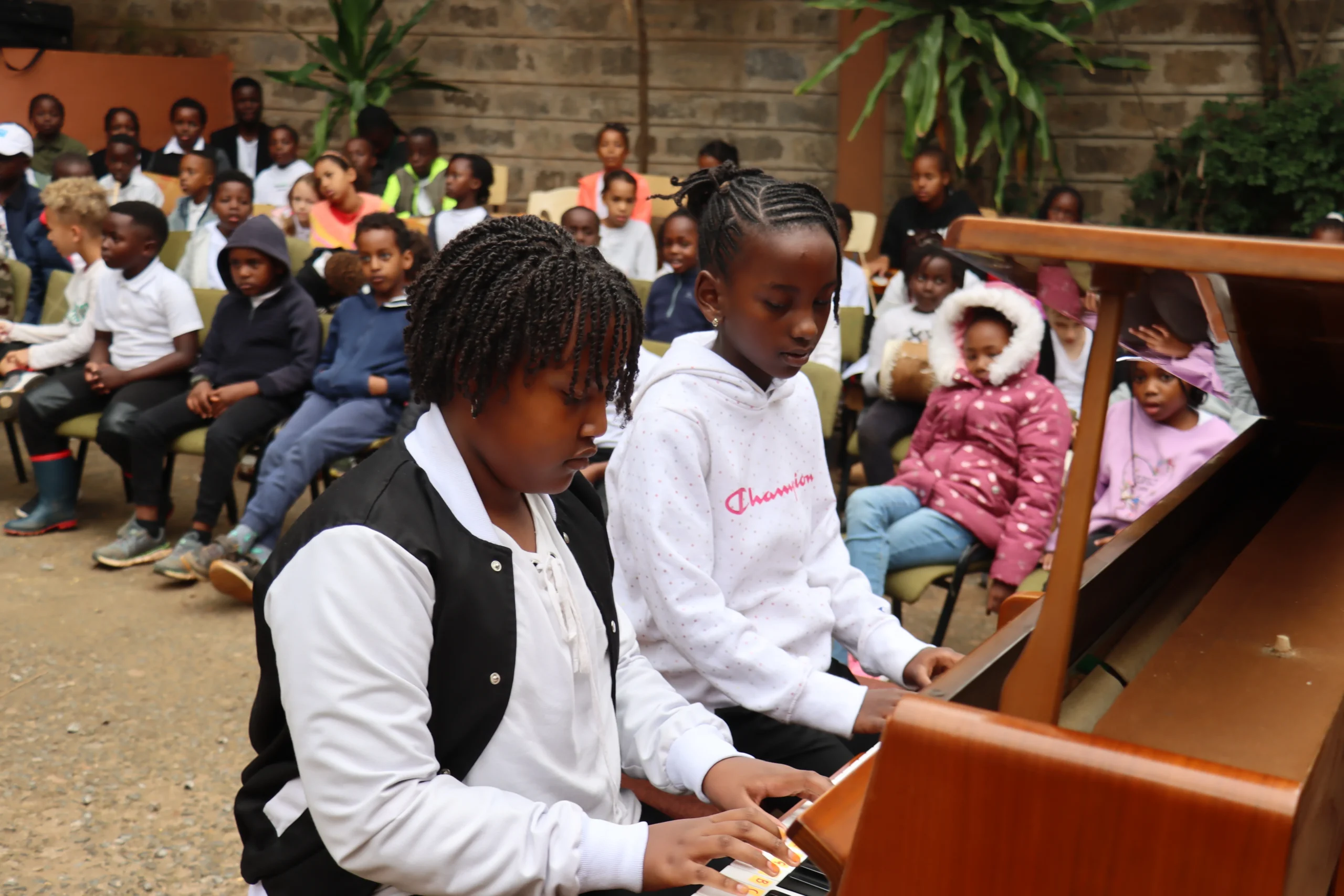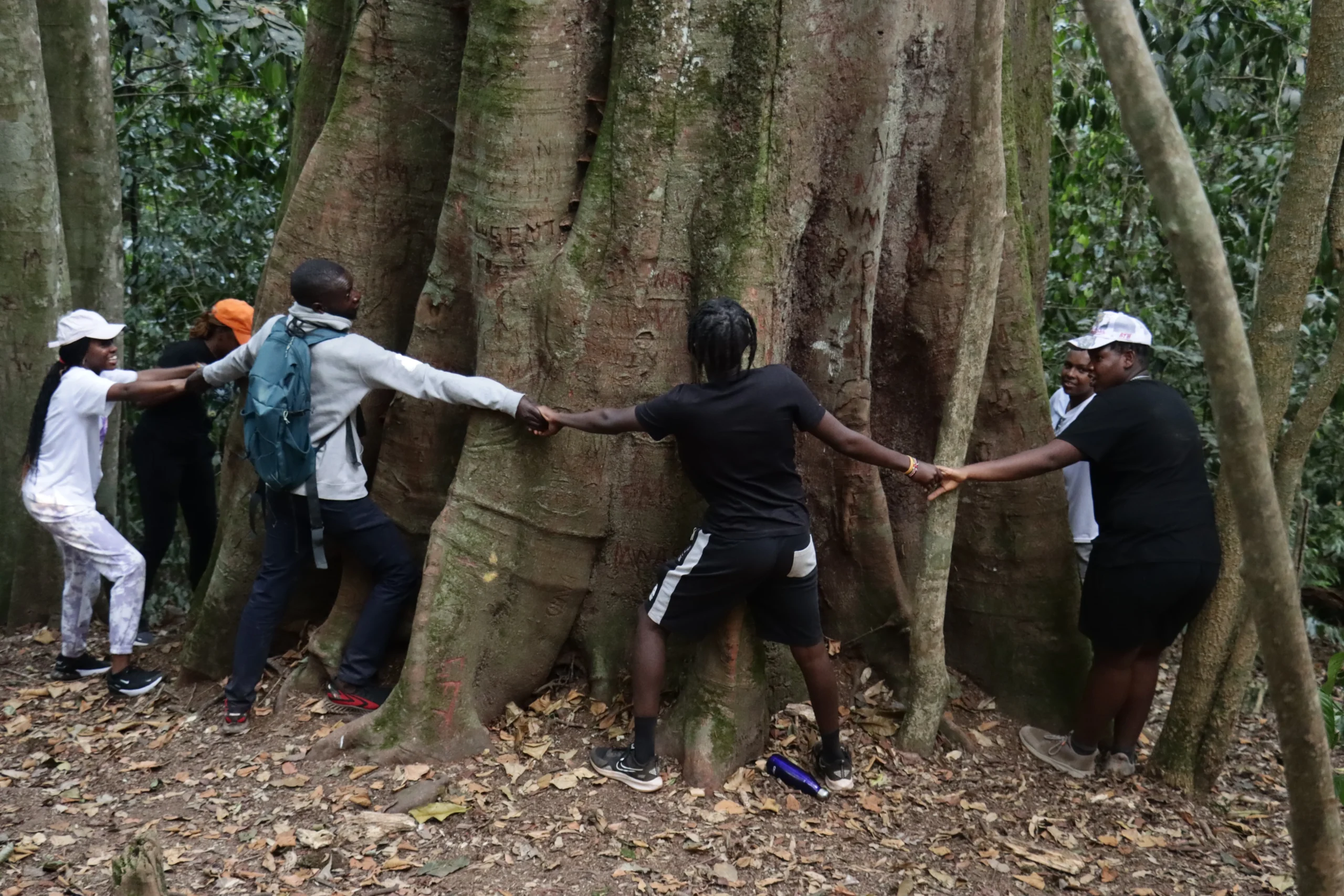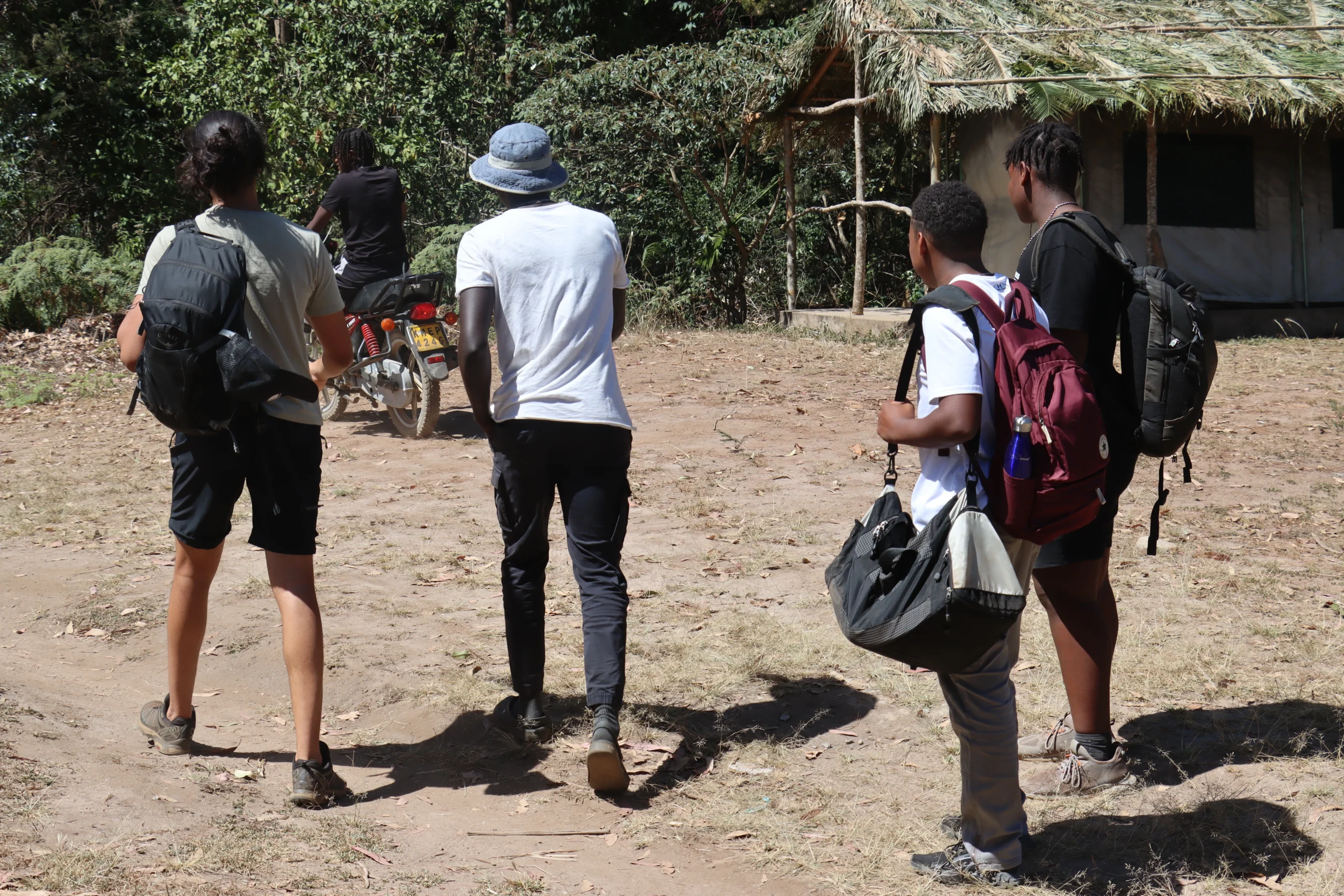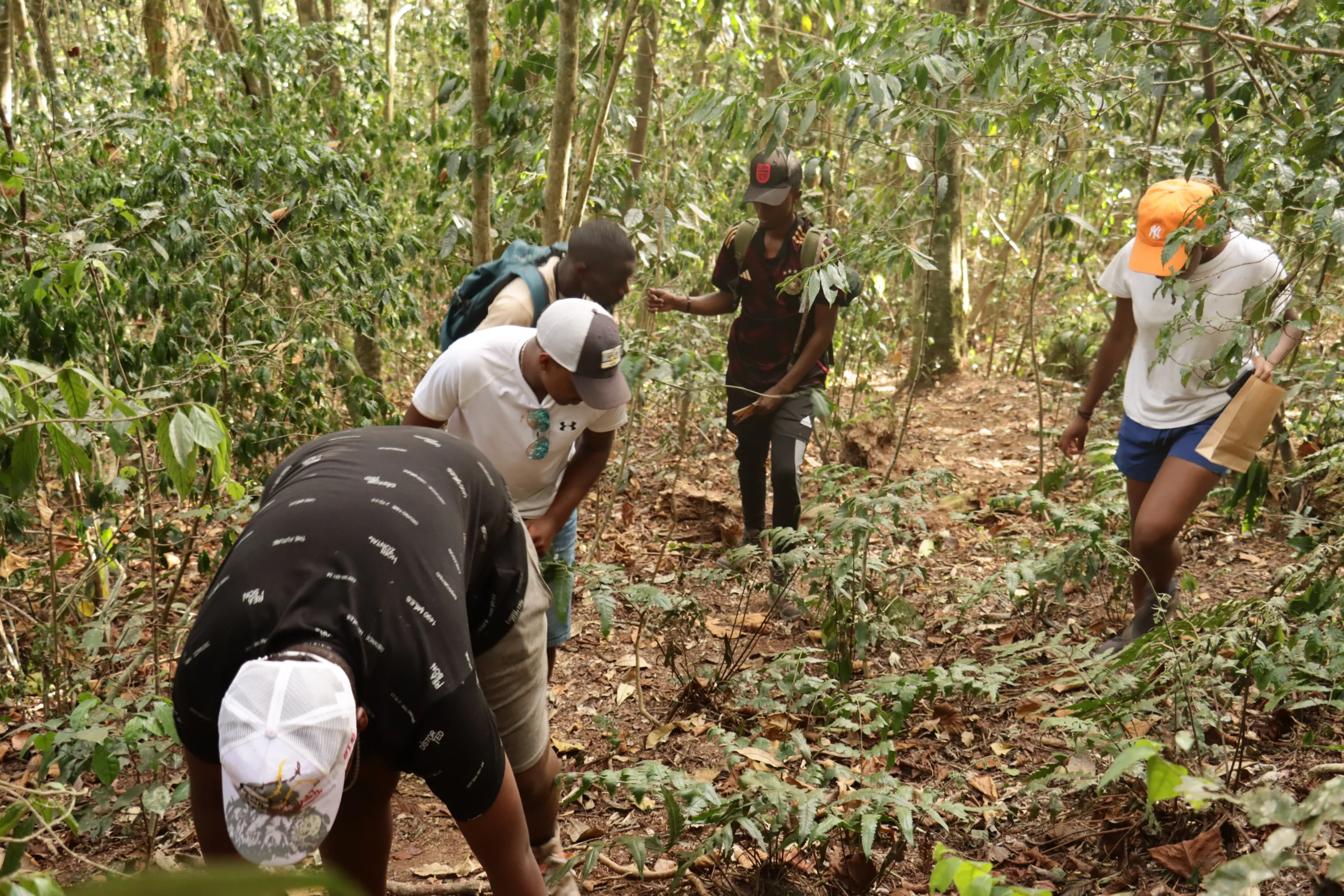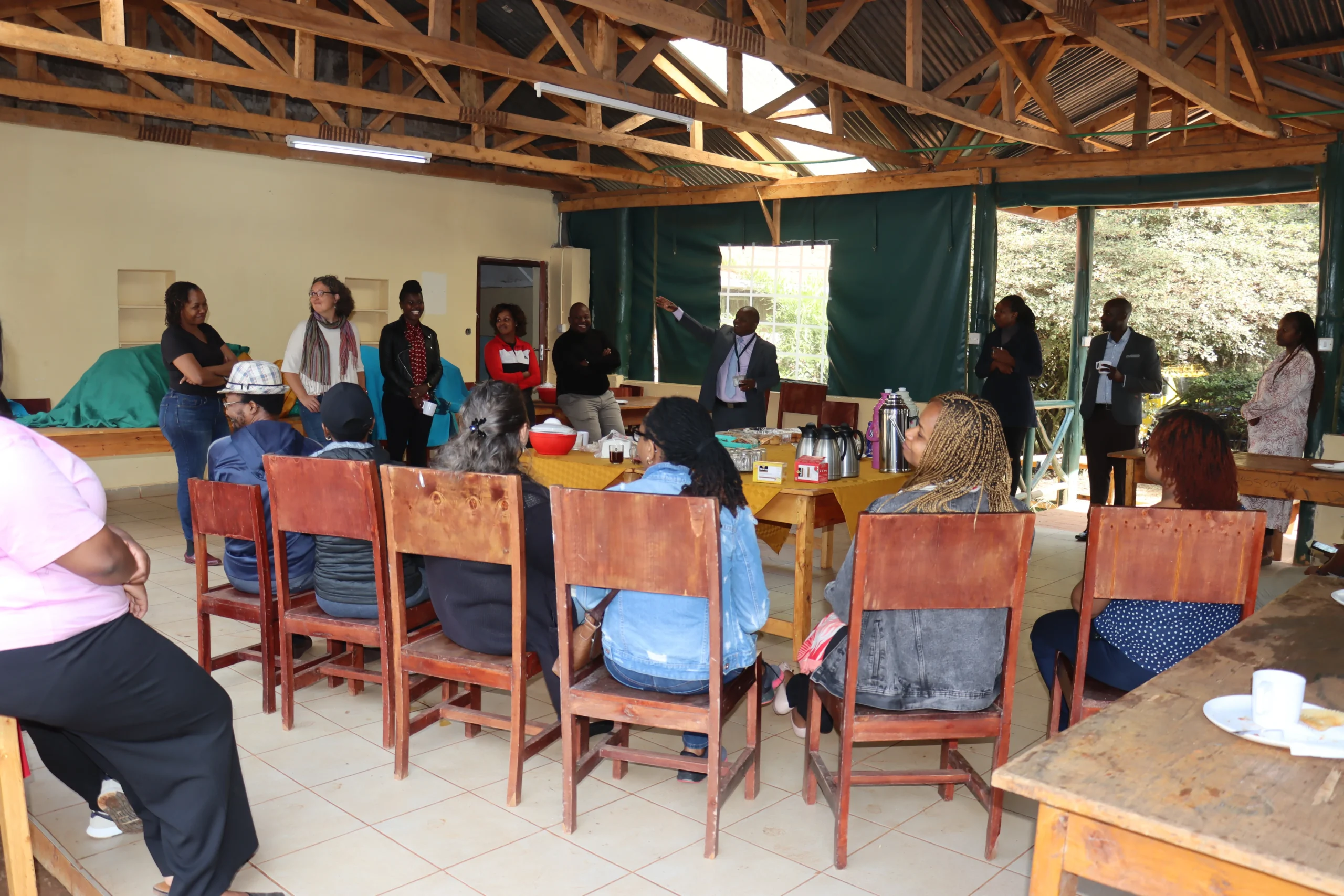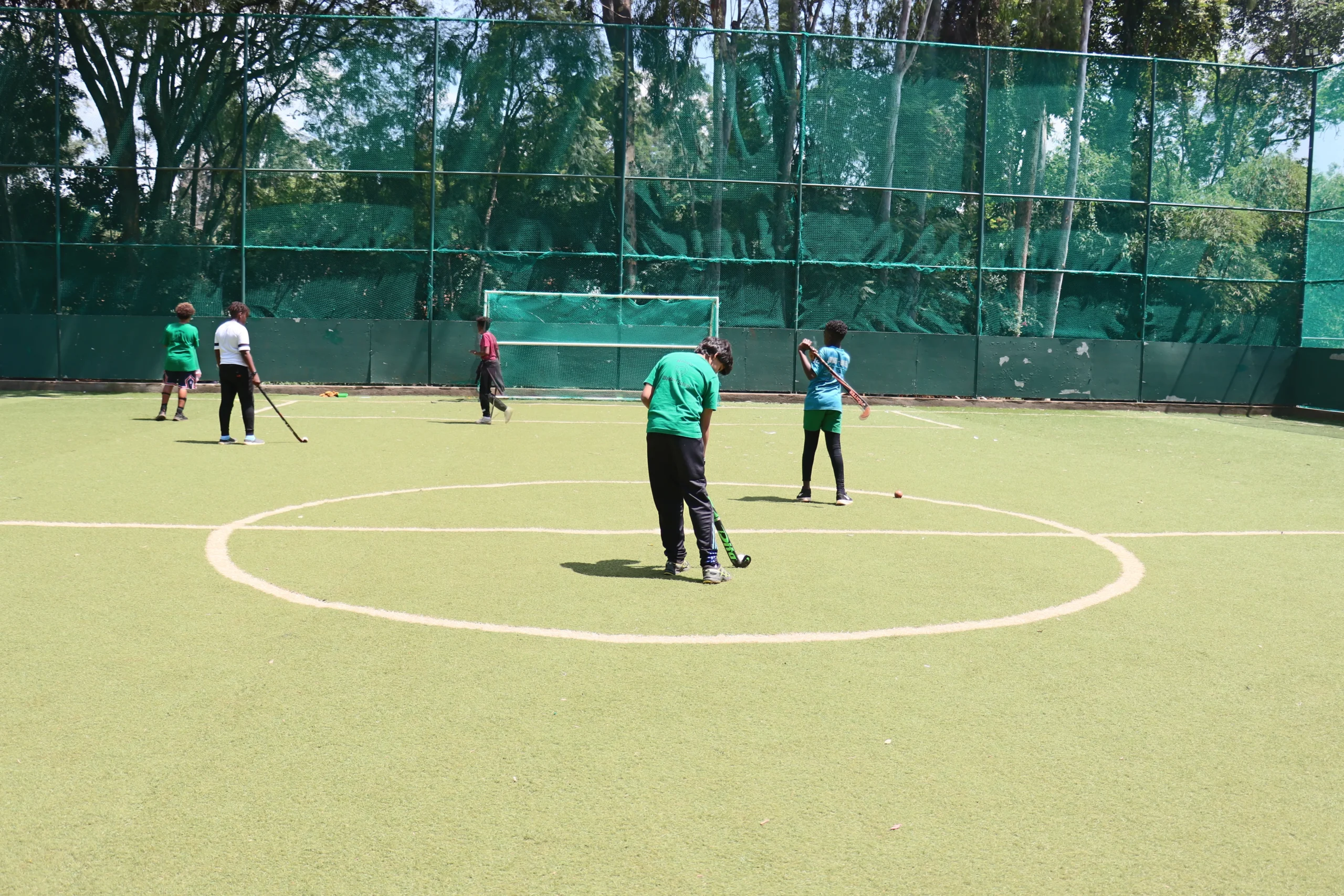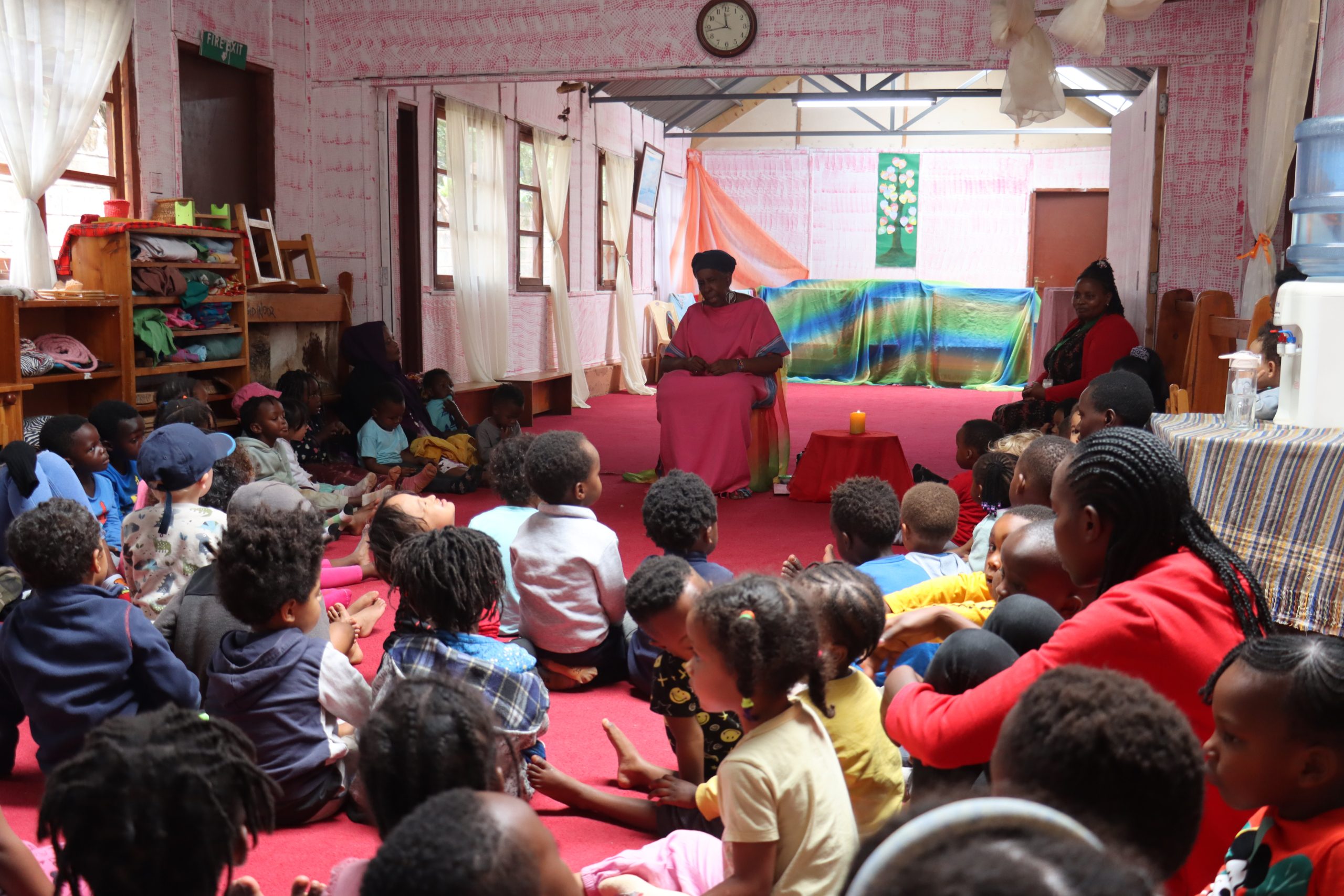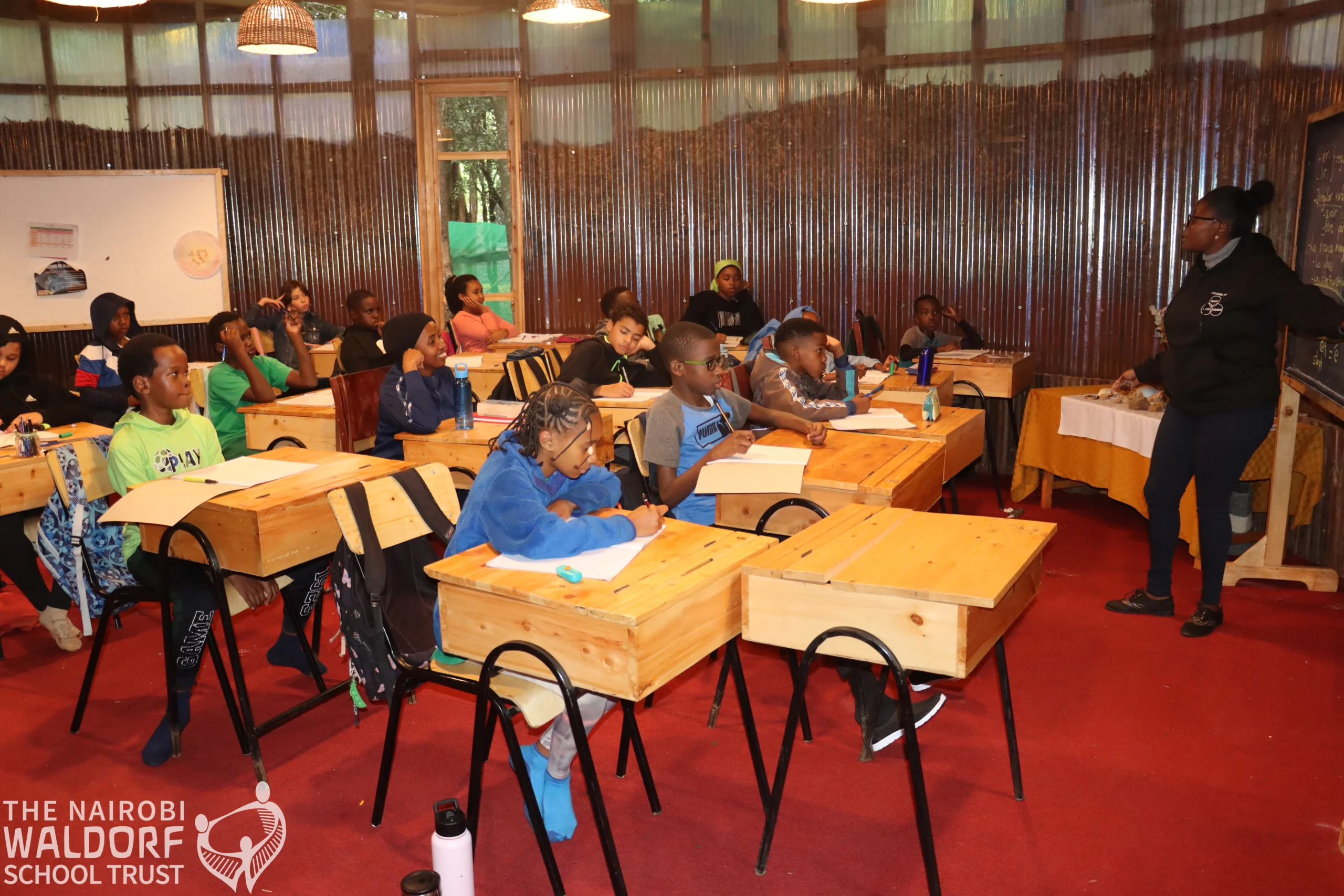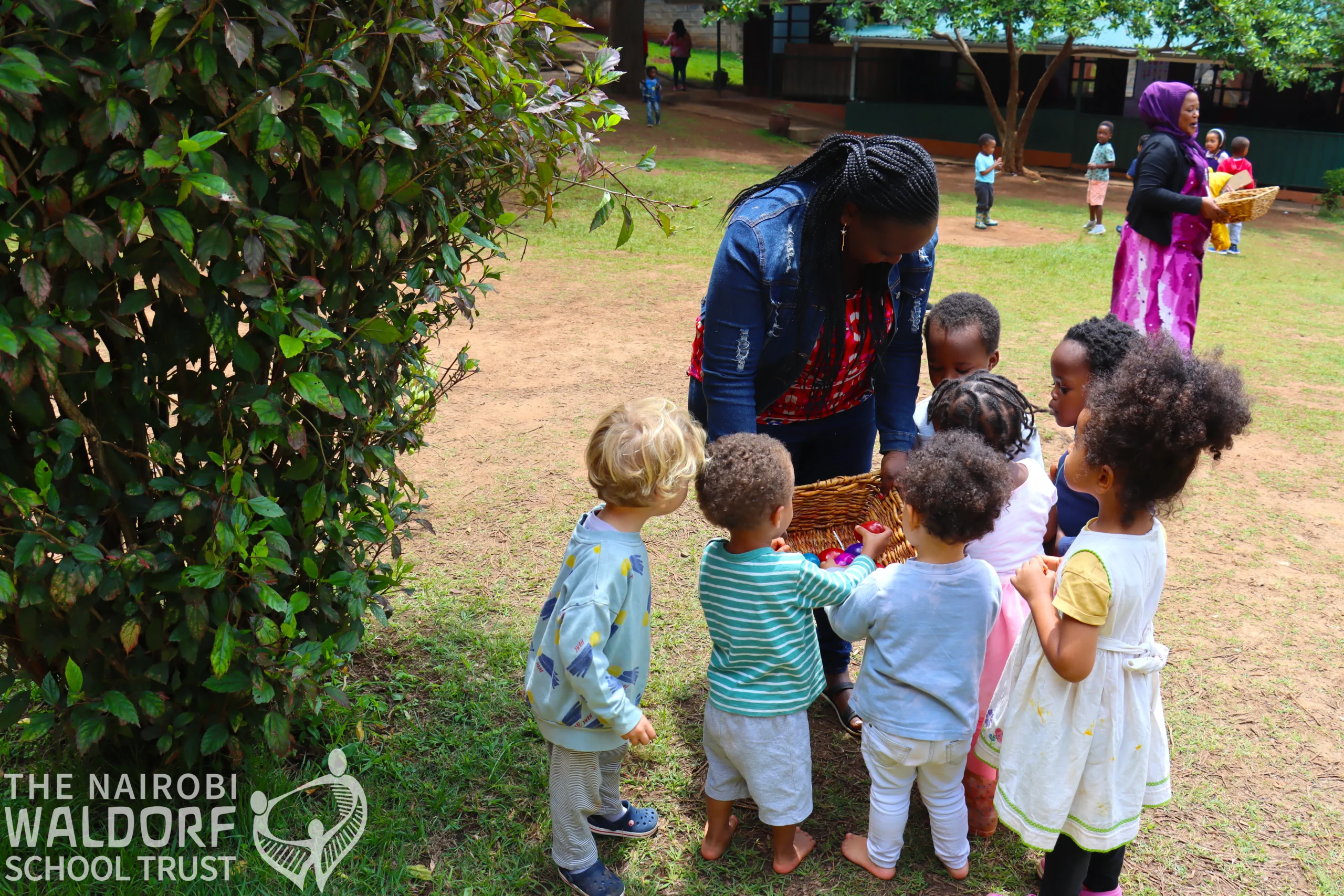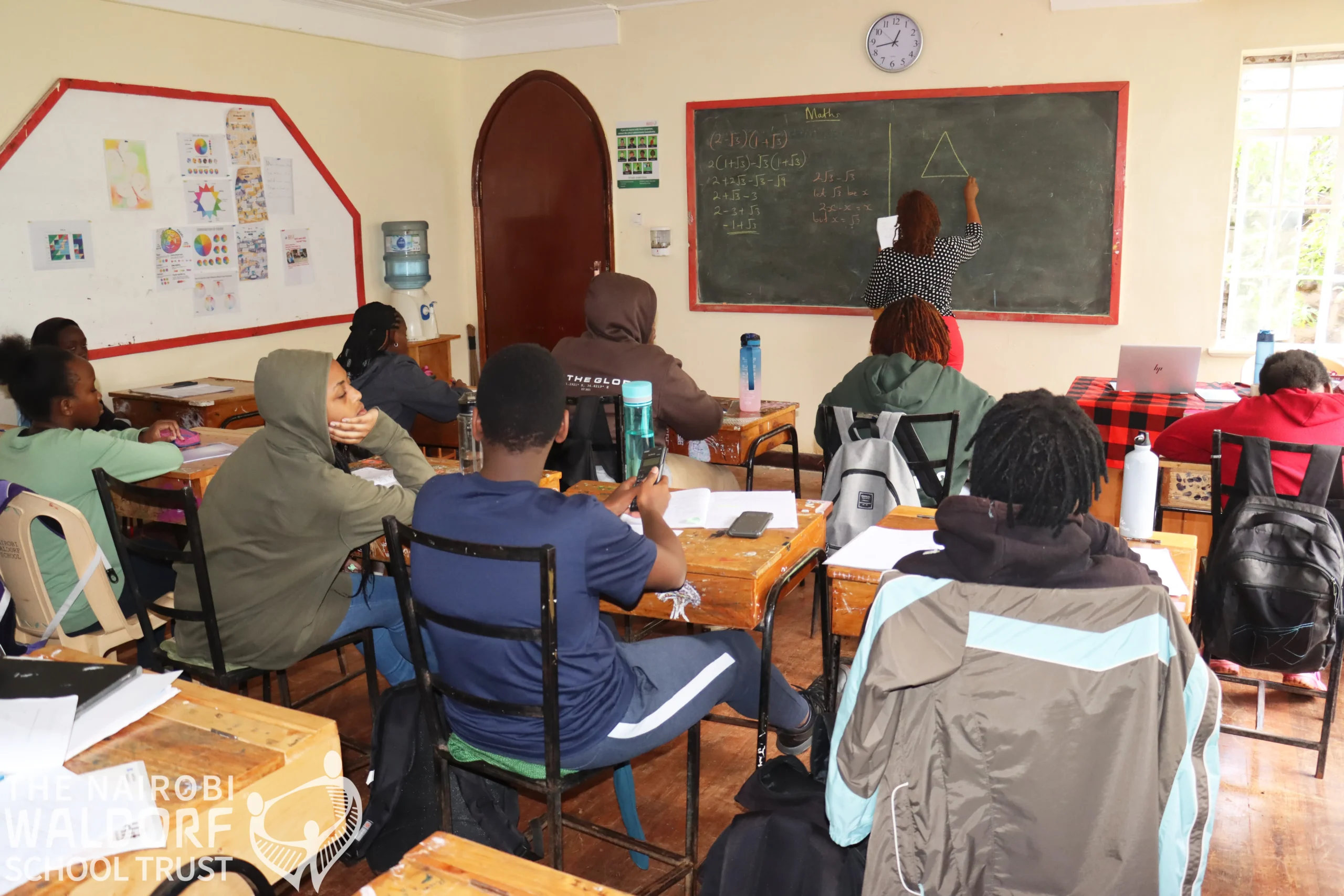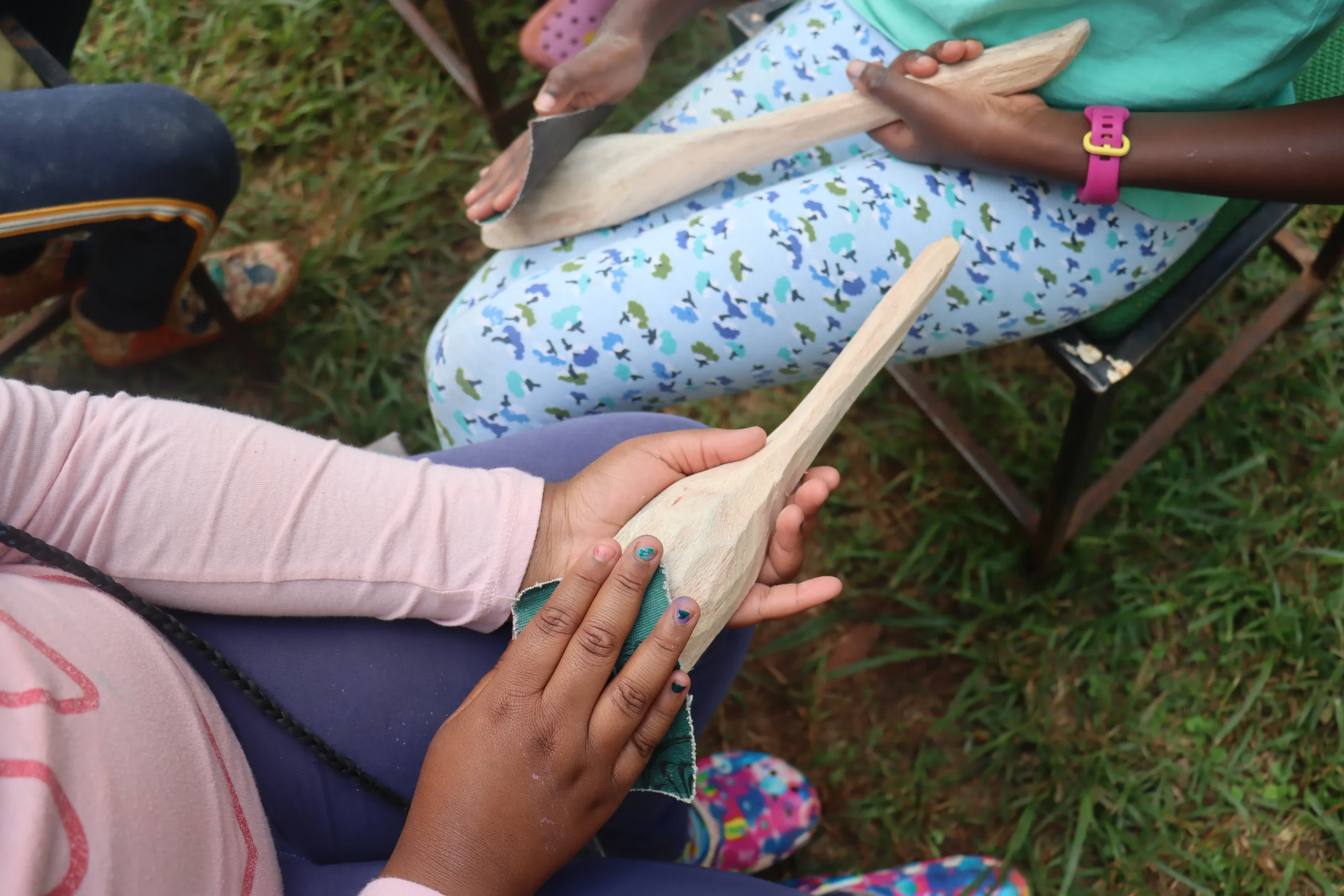NWST's Unique Essence
NWST's Unique Essence
After School Activities
Our after School clubs offer an opportunity for our children to engage in various clubs activities from Gymnastics, Ballet, Taekwondo,Robotics, Yoga,Tennis, Chess , Archery students also continue to horn extra skills in Soccer club, Basketball club and Music club.
In first term parents experience the show casing week where students exhibit what they have been learning in their respective clubs. In second term, the school organizes The Nairobi Waldorf School Club festival where a few other Schools are invited to compete in team and individual clubs, showcase their various skills, creating a
carnivore atmosphere for everyone which brings out the joy of Learning.
In third term each club organizes its on day where students are awarded certificates, badges, belts in grading and other form of awards to close up the year. This to motivate the students and inspire them to achieve their best.
Students also engage in other inter School competitions and concerts fostering social interaction with peers from other schools and promoting the well being of each child.
NWST AGM
Elections for the board of trustees are also normally held at the AGM. To ensure that all relevant information is communicated at the AGM, the agendas for the meeting are prepared and circulated to parents along with the notice of the AGM. The Agendas set out the order of business of the meeting and the topics to be covered.
NWST Career Talks
Every Wednesday, upper primary and high school students receive career talks from parents who volunteer to do so. They work closely with teachers to make these conversations as fruitful as possible.
Career Talks allow students to hear from real-life role models who can demonstrate the relevance and connection of what is taught in the classroom – because they are creating the jobs right now! They also allow students to gain an understanding of what different careers entail while bringing the curriculum to life.
The goal of Career Talks is to equip students with the inspiration and information to make better-informed decisions about their future career paths.
NWST Class Plays
NWST class plays are a wonderful Waldorf School tradition that brings the entire school community together. All class teachers, students, parents, and extended families can be included. The play allows the teacher to build the social strength of the class and reinforces several aspects of the curriculum. Preparing for the play changes the routine in a stimulating and artistic way that is a welcome break from the usual rhythm of the school year.
The philosophy and approach behind Waldorf class plays are deeply rooted in the educational principles of Rudolf Steiner, the founder of Waldorf education. These plays are seen as an integral part of the curriculum and serve multiple educational, social, and developmental purposes. Here are some key aspects:
The play helps the class teacher to develop the skills and capacity of the students and strengthens a sense of interdependence in the whole class while introducing a new form of creativity, the dramatic arts.
- Wholistic Development: Waldorf education emphasizes the development of the whole child—intellectual, emotional, physical, and spiritual. Class plays contribute to this by engaging students in a wide range of activities, including acting, memorizing lines, understanding characters, working collaboratively, and expressing emotions.
- Artistic and Creative Expression: Creativity is a cornerstone of Waldorf education. Class plays provide a platform for students to express themselves artistically, whether through acting, singing, dancing, or even helping with set design and costumes. This nurtures their imaginative capacities and appreciation for the arts.
- Social Skills and Community Building: Working on a class play requires students to collaborate, communicate, and support each other. This helps build a sense of community and teaches important social skills such as cooperation, empathy, and conflict resolution.
- Integration with the Curriculum: Plays are often chosen or written to align with the broader curriculum. For example, a class studying ancient civilizations might perform a play based on a myth or historical event from that era. This reinforces their academic learning in a dynamic and memorable way.
- Confidence and Public Speaking: Performing in front of an audience helps students build self-confidence and develop public speaking skills. This experience can be particularly beneficial for children who might be shy or less confident in other areas of their lives.
- Emotional Intelligence: Acting requires students to understand and portray different emotions and perspectives. This can deepen their emotional intelligence and help them develop empathy by stepping into the shoes of different characters.
- Rhythm and Repetition: In Waldorf education, rhythm and repetition are seen as vital for young children’s learning. Rehearsing for a play involves repeated practice, which helps solidify learning and build a strong sense of rhythm and routine.
- Teacher-Student Relationships: Class plays offer opportunities for teachers to work closely with their students in a different context than regular classroom activities. This can strengthen teacher-student relationships and provide insights into each child’s strengths and areas for growth.
Embracing Creativity & Craftsmanship at NWST
At Nairobi Waldorf School, our commitment to fostering holistic development is reflected in our dynamic Creative Arts, Woodwork, and Handwork programs. These programs embody the essence of the Waldorf philosophy, which emphasizes experiential learning, creativity, and the harmonious development of the head, heart, and hands.
The Waldorf Approach to Creative Arts
The Waldorf philosophy, founded by Rudolf Steiner, is rooted in the belief that education should nurture the whole child. Our Creative Arts program is designed to inspire wonder, cultivate imagination, and encourage self-expression. Through activities such as painting, drawing, and sculpture, students explore the formal qualities of art—line, shape, color, and texture. This approach not only supports the development of visual and observational skills but also aligns with our goal of fostering a deep connection with the world around us.
Woodwork and Handwork: Crafting with Purpose
In our Woodwork and Handwork classes, students engage in activities that are both practical and artistic. These programs emphasize the Waldorf ideals of patience, precision, and the joy of creating something with one’s own hands. Woodwork involves learning the skills of measuring, cutting, and assembling wood to create functional and beautiful objects. Handwork encompasses a variety of crafts, including knitting, crocheting, and sewing, which develop fine motor skills and hand-eye coordination.
Educational Alignment & Benefits
Our Creative Arts, Woodwork, and Handwork programs align seamlessly with the overall educational goals of Nairobi Waldorf School. By integrating these hands-on activities into our curriculum, we aim to:
1. Encourage Holistic Development: Balancing academic learning with artistic and practical activities ensures that students grow intellectually, emotionally, and physically.
2. Foster Creativity and Imagination: Students are encouraged to think creatively and express their unique perspectives, which is fundamental to their overall development.
3. Develop Fine Motor Skills: Activities like painting, woodworking, and knitting require precise movements, enhancing students’ dexterity and coordination.
4. Enhance Problem-Solving Abilities: Crafting projects often present challenges that require innovative solutions, fostering critical thinking and problem-solving skills.
Showcasing Student Talent
At Nairobi Waldorf School, we believe in celebrating our students’ achievements and providing them with opportunities to share their work with the community. Throughout the year, we host various events, exhibitions, and showcases where students can present their creations. These events not only highlight the artistic and technical skills of our students but also build their confidence and pride in their work.
Join Our Vibrant Community
As an enthusiastic teacher at Nairobi Waldorf School, I am thrilled to be part of a community that values creativity, craftsmanship, and the holistic development of every student. Our programs in Creative Arts, Woodwork, and Handwork are designed to nurture the unique talents and potential of each child, preparing them for a future where they can think critically, act compassionately, and create beautifully.
We invite you to explore the vibrant world of Waldorf education and witness firsthand how our students thrive in an environment that honors their individuality and fosters a lifelong love of learning. Come visit us, attend our exhibitions, and experience the magic of creative exploration at Nairobi Waldorf School.
Creative Art
Embracing Creativity and Craftsmanship at Nairobi Waldorf School
At Nairobi Waldorf School, our commitment to fostering holistic development is reflected in our dynamic Creative Arts, Woodwork, and Handwork programs. These programs embody the essence of the Waldorf philosophy, which emphasizes experiential learning, creativity, and the harmonious development of the head, heart, and hands.
The Waldorf Approach to Creative Arts
The Waldorf philosophy, founded by Rudolf Steiner, is rooted in the belief that education should nurture the whole child. Our Creative Arts program is designed to inspire wonder, cultivate imagination, and encourage self-expression. Through activities such as painting, drawing, and sculpture, students explore the formal qualities of art—line, shape, color, and texture. This approach not only supports the development of visual and observational skills but also aligns with our goal of fostering a deep connection with the world around us.
Woodwork and Handwork: Crafting with Purpose
In our Woodwork and Handwork classes, students engage in activities that are both practical and artistic. These programs emphasize the Waldorf ideals of patience, precision, and the joy of creating something with one’s own hands. Woodwork involves learning the skills of measuring, cutting, and assembling wood to create functional and beautiful objects. Handwork encompasses a variety of crafts, including knitting, crocheting, and sewing, which develop fine motor skills and hand-eye coordination.
Educational Alignment and Benefits
Our Creative Arts, Woodwork, and Handwork programs align seamlessly with the overall educational goals of Nairobi Waldorf School. By integrating these hands-on activities into our curriculum, we aim to:
- Encourage Holistic Development: Balancing academic learning with artistic and practical activities ensures that students grow intellectually, emotionally, and physically.
- Foster Creativity and Imagination: Students are encouraged to think creatively and express their unique perspectives, which is fundamental to their overall development.
- Develop Fine Motor Skills: Activities like painting, woodworking, and knitting require precise movements, enhancing students’ dexterity and coordination.
- Enhance Problem-Solving Abilities: Crafting projects often present challenges that require innovative solutions, fostering critical thinking and problem-solving skills.
Showcasing Student Talent
At Nairobi Waldorf School, we believe in celebrating our students’ achievements and providing them with opportunities to share their work with the community. Throughout the year, we host various events, exhibitions, and showcases where students can present their creations. These events not only highlight the artistic and technical skills of our students but also build their confidence and pride in their work.
Join Our Vibrant Community
As an enthusiastic teacher at Nairobi Waldorf School, I am thrilled to be part of a community that values creativity, craftsmanship, and the holistic development of every student. Our programs in Creative Arts, Woodwork, and Handwork are designed to nurture the unique talents and potential of each child, preparing them for a future where they can think critically, act compassionately, and create beautifully.
We invite you to explore the vibrant world of Waldorf education and witness firsthand how our students thrive in an environment that honors their individuality and fosters a lifelong love of learning. Come visit us, attend our exhibitions, and experience the magic of creative exploration at Nairobi Waldorf School.
Creative Crafts
Waldorf education fosters in nurturing creativity through handwork and crafts by encouraging children to work with the natural materials and create their own designs. Children are encouraged to work with a variety of materials and techniques which helps to develop their fine motor skills and hand-eye coordination, additionally in craft making, we often use natural materials and recyclables in which they create beautiful and useful objects with their hands, this fosters a sense of accomplishment and self-confidence. Children are taught to appreciate the beauty of natural materials and work with them in a way that brings out their unique qualities.
Creative crafts vary from the age of the child, it starts from a simple craft and builds up to more complex according to the developmental milestones of the children. At the completion of every craft, children get an opportunity to display and showcase their work, and also take the crafts home.
Benefits of Craft Making.
- Enhance and strengthen the fine motor skills and muscles
- Empowers cognitive development
- Builds confidence and self esteem
- Foster creativity and imagination
- Strengthens concentration
- Boosts the eye-hand coordination
- Cultural Awareness
- Beauty, and appreciate owns work
Eurythmy
Eurythmy is an art of movement essential to Waldorf Education. In eurythmy lessons, each child at NWST learns to become attentive to the variety of sounds, rhythms, and images in a poem or piece of music. They are led in differentiated arm movements that express the inner feeling and creative force of the vowels and consonants or the tones and intervals. Moving through the room with others in choreographed geometric or asymmetric forms, the participants also focus on conveying the rhythm, phrasing, and dynamics of the piece.
Eurythmy both requires and develops focus and goodwill. There is power in listening, imagining,and moving together, with the shy ones overcoming their reticence, the loud ones their desire for attention, the slow ones their inertia, and the assertive ones their desire to be first. Everyone can generously become part of something bigger, and in so doing, find balance. Mobility in space can arouse mobility in thinking and vice versa. Arm and leg movements such as those that cross the medial, horizontal, and frontal planes can help the children to establish a sense of space in themselves (and of themselves in space) and a clear foundation for mathematics.
In the early grades, eurythmy forms are generally done moving forwards (walking, running,skipping, galloping, tiptoeing together in a circle or another basic geometric form), as the story or music suggests. Around fourth grade, the students become independent enough to face the front of the room with an awareness of the unseen space behind, as they move in a variety of directions on individual parts in a group form. And later, as adolescence approaches and the students gain the capacity to flow more freely on curvy, angular, or complex designs, the space around and between the performers becomes more “alive” and important.
In the early grades, eurythmy forms are generally done moving forwards (walking, running,skipping, galloping, tiptoeing together in a circle or another basic geometric form), as the story or music suggests. Around fourth grade, the students become independent enough to face the front of the room with an awareness of the unseen space behind, as they move in a variety of directions on individual parts in a group form. And later, as adolescence approaches and the students gain the capacity to flow more freely on curvy, angular, or complex designs, the space around and between the performers becomes more “alive” and important.
Doing eurythmy together is a powerful nonverbal exercise in social and spiritual awareness. In the live presence of classmates with an accompanist playing music and a teacher reciting poetry, there is a deep reality to be explored which is not “virtual.” For each student, opportunities abound to go through that door with energy and concentration, heart and soul, and receive what eurythmy has to offer. It is a free decision. And a beautiful thing to see them strive for it together!
Susan Elmore – Waldorf, Moraine Farm
Festivals
Waldorf Festivals and celebrations play an essential role in the Waldorf experience. Seasonal festivals connect humanity with the rhythms of nature and the cosmos. The festivals originated in ancient cultures, yet have been adapted over time and across cultures to join the seasonal moods of the year, festively, which benefits the inner life of the soul. Celebrating is an art. There is joy in the anticipation, the preparation, the celebration itself, and the memories.
Agape Festival – This festival allows the children to celebrate love and friendship. Students prepare and share meals and notes of kindness and friendship with their fellow classes.
Swahili Festival – This celebration of Swahili culture is a vibrant collection of songs, dances, clothing, and food enjoyed by the staff and students.
Lantern Festival – Often called Martinmas, this festival invites parents to create a lantern before the evening lantern walk, commemorating the light that shines forth from each of us.
Transition Ceremony – This ceremony celebrates Kindergarten children as they transition to Class. They walk through the spiral path and the lighting of the candle signifies their continuing educational journey.
Shambani Festival – To honor the bounty of the shamba and the hard work of planting, sowing, weeding, and harvesting, the Kindergartens celebrate with a performance. Following the harvest, soup is prepared for a shared parent meal.
Rose Ceremony – The school year begins with an exchange of roses from the upper classes to the incoming Class 1 students as they begin their journey in primary.
Festival of Courage – Similar to Michael mass, this festival challenges the children to develop strong, brave, free wills, and to overcome the love of ease, anxiety, and fear.
Flower Festival – This festival celebrates nature and the short-rains. We embrace the emerging blooms (especially the jacaranda trees), by making flower rings and planting flowers in our Kindergarten.
Festival of Light – Held near the holiday season, this festival combines the shared reverence of light across many cultures. The children prepare a performance.
Rainbow Festival – This festival is celebrated at the start of the long rains where a mixture of sun and rain often creates rainbows. This brings about the concept of color experienced in nature.
Games Children Engaged In NWST
In NWST learners are engaged in various sports activities. In class 1-3 learners are taught Wadorf games. This is a combination of fun games and creative games. This is to enhance physical learning in a fun way.
In the main sports learners are given opportunities to participate in friendlies and tournaments.
In high school that is class 9-12 learners have to choose a game that they will be participating in. These games are: football, basketball, rugby, tennis, and table tennis.
Swimming is taught in the whole academic year (3 terms) In class one we do an introduction to the water environment. Here we mostly do water games and basic movement in front crawl and backstroke.
In class 4 learners are introduced to main sports: football, hockey, netball, rugby, basketball and cricket. It is from class 5-8 where learners participate in each termly sport competitively.
Term one we do football, cricket and basketball.
Term two we do hockey.
Term three we do rugby and netball.
In class 2 and 3 learners are taught coordination in front crawl and backstroke.
In class 4 and 5 learners are taught coordination in all strokes; front crawl, backstroke, breaststroke and butterfly.
In upper school and high school learners are taught endurance in all strokes (bronze and silver medallion) They are also taught basic lifesaving and survival skills.
Gardening In Waldorf Grade 3
Children come into this world trailing clouds of spiritual glory, but they must be disconnected from the Godhead and feel the separation from their pre-earthly home. Out of free will each person in their life has the opportunity to choose what is good and find their divine nature again. The third grade is often called the turning point of childhood.
The eight-year-old is going through a change that is particularly profound. Before the age of nine, the major part of the child’s being is not yet incarnated, and instead, it lives within everything and everyone they perceive. They feel inwardly related to everything, and can identify fully with almost anything.
For the third grader, the remedy for being “cast out of Eden,”/ separation is experiencing that the world is a good place to be. Through the activities of gardening and many others, the children learn that they can use what is around them to thrive. They meet the earth around them and discover they have the power to transform it. Through the gardening experience, the children learn many skills such as land preparation, making of organic manure, use of farming tools, planting, weeding, harvesting and food preparation skills. With each skill learned, they gain comfort, confidence, and experience joy. They get to know that Earth is their home and it is good and beautiful.
Now ( around 8-9 years), an experience arises of self as something independent of everything else. Now the child may suddenly feel very insecure; their relationship with nature, with eternity, with others, and with themselves, has to be reestablished. Life certainly takes on quite a different quality. This separation and search for one’s true home is reflected in the journey of the Hebrew people as they leave the Garden of Eden and are presented with trials where they have the choice to do what is right or not. It is the beginning of individuation. Through our individual decisions to turn away from evil and choose the good, we attain virtue and progress in evolution as human beings.
Handworking
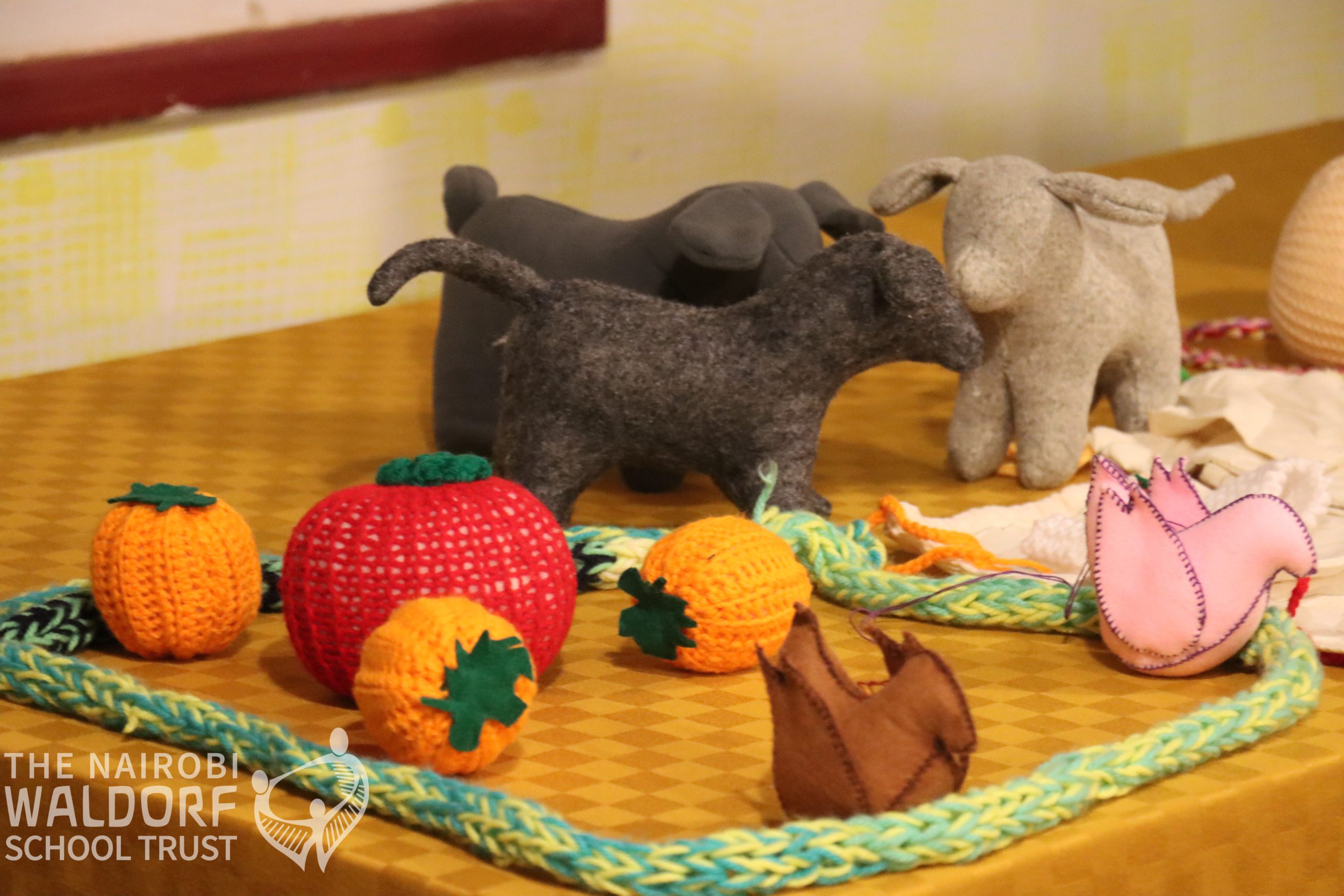 Handwork is an integral part of the curriculum from the early years. It provides a balancing element to the intellectual activities. practical arts provide us with unique experience. In making something from natural raw materials. This can bring deeper relationship with the world around us . This mediates between seen and unseen realms something from individual imagination or inspiration is brought from immaterial realms to physical reality.Through striving for beauty in form and colour students develop a heart felt relationship with what they are making.
Handwork is an integral part of the curriculum from the early years. It provides a balancing element to the intellectual activities. practical arts provide us with unique experience. In making something from natural raw materials. This can bring deeper relationship with the world around us . This mediates between seen and unseen realms something from individual imagination or inspiration is brought from immaterial realms to physical reality.Through striving for beauty in form and colour students develop a heart felt relationship with what they are making.
It supports the foundations for academic skills – two hand working together teams together the two sides of the body and the two sides of the hemisphere of the brain.This establishes and strengthens all – important news perceptive and cognitive connections; smooth eye tracking and visual pattern recognition are fostered, eye hand co- ordination, fine finger movements are required as are perseverance, planning and attention to detail.
Examples of handwork taken are pom pom, god’s eye, sewing with embroidery rings frame weaving four peg, two peg, finger knitting, knitting with two knitting needles, crotcheting sewing flowers using different stitches knitting with four knitting needles sewing with hand sewing machine and many more.
Through handwork, an individual craftsperson’s thinking and active work becomes the meeting place between the inspiration of unseen spirit and tangible matter.It takes place alongside every other subject uniting head heart and hands( Thinking, Feeling and willing.
Main Lesson
The Waldorf school day is divided into three main parts: head, heart and hands. The Head Lesson is also referred to as the Main Lesson and comes first every day in the morning. The Heart Lessons follow after the break, they include Music, French, Kiswahili, English Practice and Math Practice. The afternoon is reserved for Hand Lessons, which include Games, Handwork, Painting, Form Drawing, Woodwork and Gardening.
The Main Lesson runs for two hours every day between 8.15 am and 10.15 am, during which time the subject or the block is taught for about three to four weeks. This helps the teacher cover the content intensively and gives the children the fullest possible immersion in the subject. The student’s experience of the subject is further enhanced by allowing the subject to ‘go to sleep’ before being reawakened later in the year or sometimes the following year. Through the process of forgetting and remembering children return to the subject with new insights, The time between the Main Lesson Blocks in a subject allows children’s concepts to develop gradually and mature. Knowledge needs time to blossom. The Main Lesson ensures that students have sufficient time to experience a living process of learning.
Structure Of A Main Lesson
- Rhymic Part:The essence of these activities is to get the blood flowing and oxygenate the brain to help the children get fully engaged in the lesson. These activities also bring the whole class together as a group and wake them up for a day of learning.This is a session where engage in activities such as:Singing, poetry, movement, language or arithmetic games, mental math, playing the recorder, reciting multiplication tables.The skills change with each new block.
- Review & New Content:After the Rhythmic Part of Activities, the children will settle down ready to focus on the deeper academic part of the lesson. The teacher together with the children reviews the previous day’s work and thereafter the teacher introduces the new content of the day.
- The Doing Part:The children will be engaged in different activities that help reinforce what they have learnt, i.e, compose a short piece for the Main Lesson, draw, paint, engage in a discussion
The Three-Day Rhythm
Waldorf is unique in the sense that children are not quizzed immediately on information received either by the written or oral question, instead, they are given to process and digest this information.
To help the children internalize the content, the delivery of the new content takes the structure of a three-day rhythm.
Day 1-The teacher tells a story on the new content.
Day 2-The children recall the previous day’s work and have further exploration: painting, drawing or drama.
Day 3-The children recall both factual information of the new content and write a short piece of information on the content learnt.
Movement is Fundamental for Children’s Learning.
The primary philosophy behind the Waldorf movement is based on Rudolf Steiner’s belief in the holistic development of the child, encompassing physical, emotional, intellectual, and spiritual growth. Movement activities in Waldorf education are deeply integrated into the curriculum and aim to nurture the whole child. At Nairobi Waldorf School, we recognize that our student’s physical, social and emotional well-being are a key part of their ability to learn and thrive. Our holistic approach to education prioritizes critical thinking, communication, collaboration, and creativity to prepare students for the challenges of the 21st century.
The movement we incorporate into Waldorf education is suited to each child’s developmental stage, as well as being linked to what children are learning as part of the rest of their education. Scientific understanding of how the brain influences the body, and the body influences the brain, is shedding light on the role movement plays in learning and memory. Incorporating movement has a significant impact on what students remember as compared to taking in concepts just auditorily or visually. In Waldorf education, we use movement as a teaching tool throughout our curriculum. Incorporating movement helps children with everything from learning their multiplication tables to understanding complex physics concepts. At Nairobi Waldorf School, movement is integrated into the academic subjects as we know that children learn best when they are engaging their full body. From math, language arts, science, and history, we incorporate group and individual movement, play performances, and more.
When it comes to deep learning, the brain is only part of the story.” says Annie Murphy Paul, author of the book “The Extended Mind: The Power of Thinking Outside the Brain.”
Annie continues by saying that the brain has limitations when it comes to memory, focus, motivation, and grasping abstract concepts. And these limitations can be disheartening to students, which is where movement and play come in to save the day.
In order to push past these limitations in the brain, it is important for humans to move their bodies. Humans do not do their best work sitting down. Movement is fundamental for learning and development.
These are ways that Nairobi Waldorf students move throughout their days:
- Engaging in lessons outside to further solidify concepts
- Taking recesses to play between lesson
- Playing sports and doing other physical activities
- Incorporating farm work into the class’ curriculum
- Circle Games: These games involve children holding hands and walking in a circle while singing a rhyme. Clapping Games involve rhythmic clapping patterns that children perform alone or with a partner.
- Eurythmy: A unique form of movement in Waldorf education, eurythmy is often referred to as “visible speech and music.” Children perform gestures that correspond to sounds, words, and music, promoting coordination, spatial awareness, and a deeper connection to language and music.
- Seasonal Songs and Movements: Waldorf schools celebrate the changing seasons with songs and movements that reflect the natural world. For example, children might mimic the fluttering of autumn leaves or the gentle falling of snowflakes.
- Morning Circle: Each day often begins with a morning circle that includes songs, poems, and movements related to the day’s theme or season.
Benefits of movement activities.
- Physical Development: These activities enhance gross and fine motor skills, coordination, balance, and spatial awareness.
- Emotional and Social Growth: Working together in a circle fosters cooperation, empathy, and social interaction. Children learn to take turns, share space, and work as a team.
- Cognitive Skills: Memorizing songs, rhymes, and movement sequences boosts memory, language skills, and cognitive development.
- Creativity and Imagination: Waldorf movement activities often incorporate artistic and imaginative elements. Whether through eurythmy, dance, or circle games, children engage in creative expression, which is believed to be essential for emotional and psychological health. Circle games and rhythmic activities often involve imaginative play and storytelling, encouraging creativity and self-expression.
- Connection to Nature: Many activities are seasonally themed, helping children develop a deep appreciation and understanding of the natural world.
- Educational Rhythm and Routine: Movement activities provide a rhythm and routine to the school day, which is seen as stabilizing and comforting for children. The predictable structure helps children feel secure and supports their natural developmental processes.
- Development of Will and Purpose: Movement activities in Waldorf education are seen as a way to strengthen the child’s will and sense of purpose. Through purposeful, intentional movement, children learn to direct their energies and develop self-discipline, focus, and perseverance
- Integration of Body, Mind, and Spirit: Waldorf movement activities aim to integrate the physical body with the mind and spirit. Rudolf Steiner believed that physical movement is essential for cognitive and emotional development. Activities like eurythmy, which Steiner developed, are intended to make speech and music visible and tangible through movement, fostering a deep inner connection between thought, feeling, and action.
In Waldorf education we find that movement is a necessary component of every school day.
The KQED Mindshift article, How Movement and Gestures Can Improve Student Learning, by Deborah Farmer Kris states:
“It takes a fair amount of mental bandwidth to keep our bodies still because we’re meant to be in a kind of state of constant motion. And to control your impulse to move – especially for children – uses up some of the mental resources that they could otherwise apply to their learning.”
As Henry David Thoreau wrote, “the moment my legs begin to move, my thoughts begin to flow.”
Movement is a key element of Waldorf education. So from Early Childhood through High School, Nairobi Waldorf students are encouraged to play, spend time in nature, practice eurythmy, get their hands dirty on the farm, and more.
Music is the heart of the Waldorf curriculum! The Waldorf curriculum is infused with music, including singing, playing the recorder, orchestral instruments, and choral work. Every grade level focuses on enhancing these skills, making them more refined, vibrant, and artistic.
In the Early Childhood classrooms, children are guided by their dedicated teachers through songs. Simple songs mark various activities, such as the end of playtime, the beginning of circle time, lunchtime and even home time.
The waldorf music curriculum is thoughtfully designed to align with children’s developmental stages. Young children begin with basic songs, rhythmic exercises, and pentatonic scales, considered to be calming and harmonious. As they progress, the instruction becomes more complex, introducing intricate rhythms, harmonies, and musical theory.
As the children transition to fourth grade, the focus is on accurate reading of music and quality of tone on the recorder. The rhythmic work cuts across both practical’s and theory work with keen attention to music notation. Violin is also introduced in fourth grade. This is the tome of the nine-year change (Rubicon stage). This is the time the children are starting to experience the world in a new way, their emotional lives deepen. The strings give them an outlet to express those new experiences. And as they play, they are crossing their midline, this has a great benefit for the brain development.
In fifth Grade, the children comfortably sing and play two part music. Sight reading takes a center stage on recorder and violin.
In sixth grade, Recorder and violin playing continues, the children are introduced to music analysis as well as music history where they learn about historical composers.
Grade ones are introduced to pentatonic flute. This involves training them to start blowing with good breath control, training their fingers to start stretching over the five holes of the flute, bit by bit with simple three- note melody. By the beginning of the second term they are introduced to a descant recorder with focus on blowing, breathing and position while playing.
Their playing and singing is through imitation for the whole of the year into the second grade, however the songs have more form and structure with more advanced tunes.
In third grade, the children are introduced to singing in rounds, trying to sustain their melody to the end. This skill is also practiced on recorder. It is in this grade that the children are introduced into music staff and notation.
In year seven, the children are introduced to alto recorder. Here the students are expected to have some mental adjustment while reading and interpreting the music.
Theory is integrated all through the year with touches on solfas, scales, sequences, arpeggios, intervals, melody writing and harmony.
In eighth grade, the ‘elements of music’ are formally introduced though throughout Class 7 the students were using a growing familiarity with specific technical terms to inform their music studies.
Matters of workplace health and safety in the use and care of equipment are adhered to as the students engage in more sophisticated musical practices.
One of the main aims of the music curriculum in the higher classes is to enable the students to use the skills they have been developing in the younger classes to engage in more sophisticated musical practices in the areas of performance and creating music. Listening and understanding are key to this.
We have Main Lesson Books and no Textbooks at the Nairobi Waldorf School.
Textbooks that are popular in modern classrooms don’t find their way into The Nairobi Waldorf School. Instead, children are nourished on a steady diet of rich literature from their earliest days at the school. The students record content of each subject of study presented during a Main Lesson in a Main Lesson Book. These creative, curriculum rich books become the culmination of all the students have learnt in depth for the year about a topic. These topics such as language, History, Science, Mathematics and many others are taught in blocks averaging three to four weeks. The Main Lesson Books serve as both learning tools and documentation of the work covered. The creation of a Main Lesson Book is an active hands on experience of learning that encourages both intention and creativity. The book and the content of the lesson therefore becomes the child’s own.
Many research studies say this method absolutely boosts learning. The research is not about Waldorf Main Lesson Books specifically but about the effectiveness of drawing and hand note taking in relation to retention, recall and depth of learning.
Class trips at NWST play a vital role in the holistic education approach that the Waldorf philosophy advocates. The importance of of the class trips include:
Experiential Learning
Waldorf education places a strong emphasis on experiential learning—learning by doing and experiencing the world firsthand. Class trips provide students with opportunities to connect with the material they have studied in the classroom in a real-world context. For instance, a trip to a historical site brings history lessons to life, while a visit to a farm enhances the students’ understanding of agriculture and farming.
Fostering Independence and Responsibility
Class trips encourage students to step out of their comfort zones and take on new challenges. This fosters a sense of independence and responsibility as they manage their belongings, follow schedules, and work collaboratively with their peers. These experiences help students develop life skills that are essential for their personal growth.
. Enhancing Social Skills and Community Building
Waldorf education emphasizes the development of social skills and a sense of community. Class trips provide an extended time for students to interact with each other and with their teachers in a setting different from the classroom. This helps to strengthen bonds, promote teamwork, and build a strong sense of community. Students learn to support each other, resolve conflicts, and work together towards common goals.
Deepening Connection with Nature
Many Waldorf class trips involve nature and outdoor activities, reflecting the Waldorf emphasis on connecting with the natural world. Whether it’s hiking, camping, or visiting a natural reserve, these experiences cultivate a sense of appreciation and respect for the environment. Students learn about ecology, sustainability, and the interconnectedness of all living things through direct engagement with nature
Integrating Art and Creativity
Art and creativity are central to Waldorf education. Class trips often include activities that allow students to express themselves artistically, whether through drawing, painting, writing, or performing. These creative expressions help to integrate and deepen their learning experiences, making the lessons more meaningful and memorable.
Cultural and Global Awareness
Class trips expose students to different cultures, traditions, and ways of life. This broadens their perspectives and fosters a sense of global awareness and empathy. By experiencing diverse environments and interacting with people from various backgrounds, students develop a more nuanced understanding of the world and their place in it.
Personal and Academic Growth
Overall, class trips in a Waldorf school contribute to both personal and academic growth. They provide opportunities for students to apply their knowledge in real-world situations, reflect on their experiences, and grow as individuals. The integration of intellectual, emotional, and physical learning helps to nurture well-rounded, confident, and compassionate individuals.
Class 7: Exploring the Mysteries of the Rift Valley: A Journey of Discovery
This remarkable journey is designed to align perfectly with our class 7 curriculum, encompassing studies in Geography, Astronomy, History, Discoveries, and Exploration. This journey takes the class to the shores of Lake Naivasha, a true celestial marvel. The class delves into the world of mining, aligning with the discoveries and exploration curriculum, further understanding the Earth’s geological wonders. The class has the chance to explore astronomy concepts as we stargaze under the African night sky. The glittering stars will serve as your classroom, opening doors to the wonders of our universe.
Block alignment: Astronomy, Geography, History.
Duration of the trip: 5 days.
Class 8: Coastal Adventure: Exploring Kenya’s Rich History
Class 8 embarks on a fascinating journey to the coast of Kenya, where they explore historical sites and landmarks that are deeply connected to the history curriculum and various other learning areas.
The proposed places of interest include: Fort Jesus, Gede ruins, Vasco da Gama pillar, Sabaki bridge, old Malindi, Haller Park and Shimo la Tewa. This ties to their History block.
Block alignment and learning areas: Environmental Science, History, Geography .
Duration of the trip: 5 days.
Class 9: Unlocking the Geological Wonders of Rift Valley: A Journey through Time and Space
This expedition is meticulously designed to align with several key learning areas, fostering curiosity, understanding, and appreciation. We will embark on an adventure that includes visits to Lord Egerton Castle, Olkaria Geothermal Area and Lake Bogoria, and the Menengai Crater.
Block alignment: Geology, History, Geography
Duration of the trip: 5 days.
Class 10: Starry Skies and Earth’s Wonders
Students will have the opportunity to explore the mysteries of the night sky. We’ll begin our adventure with a night spent under the vast canvas of stars, far away from the city lights, in a tranquil countryside setting. Here, students will learn to identify constellations, planets, and celestial objects with the guidance of experienced astronomers.
Under the guidance of skilled surveyors, students will use trigonometric principles to measure distances, angles, and elevations, creating accurate land surveys. The class also evaluates the effects on human activities on the weather and climate of the area.
Block alignment: Astronomy, Geography, Mathematics (Trigonometry and Surveying).
Duration of the trip: 5 days.
Classes 11 and 12 (IBDP CAS, Projects)
CAS, which stands for Creativity, Activity, and Service, is one of the core components of the IBDP (International Baccalaureate Diploma Program). CAS is designed to promote holistic personal development in students by encouraging them to engage in a wide range of extracurricular activities and experiences beyond the classroom:
- Creativity: CAS encourages students to explore their creative side by participating in activities such as art, music, drama, writing, and more. This component allows students to develop their imagination, innovation, and creative problem-solving skills. Engaging in creative pursuits fosters a sense of self-expression, and it can also lead to personal growth and increased self-confidence.
- Activity: The “Activity” aspect of CAS promotes physical well-being and a healthy lifestyle. Students are encouraged to participate in sports, physical fitness activities, and other forms of exercise. This component not only supports physical health but also teaches students valuable lessons about teamwork, discipline, and perseverance.
- Service: The “Service” component of CAS emphasizes community engagement and social responsibility. Students are encouraged to volunteer their time and skills to help others in their communities. This can include activities like volunteering at a local charity, organizing fundraisers for a good cause, or participating in environmental conservation efforts. Service experiences help students develop empathy, a sense of social justice, and a commitment to making a positive impact on the world.
Short term CAS projects are continuous throughout the school year with the week-long trips occurring in February.
The Nature of NWST Trips
Each class experiences an annual educational class trip. The educational class trip has clearly defined objectives that align with specific curriculum goals, ensuring that students can apply classroom learning in a practical context. Class trips are directly relevant to the subjects or topics covered, providing real-world experiences that reinforce and deepen the students’ understanding. Teachers prepare students by introducing relevant concepts and background knowledge before the excursion, setting the stage for meaningful engagement. Following the trip, post-trip reflections and activities such as journaling, group discussions, presentations, or creative projects help students process their experiences and integrate them with their classroom learning. This comprehensive approach ensures that educational trips are not only enriching and enjoyable but also seamlessly integrated into the curriculum, enhancing overall educational outcomes.
The staffing requirements for each class trip is adequately addressed, ensuring the appointment of trip leaders, and other necessary personnel. Expectations for staff conduct and responsibilities during trips are clearly outlined and discussed at faculty meetings, while comprehensive training and preparation for staff involved in trip supervision is provided. To ensure student safety and effective supervision, the following adult-to-student ratios is maintained: for primary and secondary school day trips, a ratio of 1:20, and for residential trips (trips lasting more than a day), 1:10; for kindergarten day trips, a ratio of 1:10 for 4-6 year olds and 1:6 for 1.5-3 year olds. Additionally, it is mandatory to have both male and female adults present on all trips, and parent volunteers are invited to assist with kindergarten trip supervision. This thorough and structured approach to supervision and staffing guarantees a safe, well-organized, and enriching experience for all students.
ANNUAL EDUCATIONAL CLASS TRIPS – OVERVIEW
Kindergarten: Nature Celebration Trip: Embracing Nature’s Beauty
A Kindergarten trip happens once in a school year, likely when they are celebrating a festival, either flower or rainbow festival. This can be a nature trail in a forest or a visit to a farm. The children usually have a picnic at the site. The main theme is allowing the children to connect and appreciate nature. This is a half day trip and the venue is chosen somewhere near/around the school to allow the children to come back for lunch/pick up time.
Duration of the trip: Half a day.
Class 1: Nature Exploration: Local Half-Day Trip
Class 1 tours the local area for half a day during school hours. This trip occurs near school and could include a nature trail such as Oloolua Forest in Karen. The curriculum related theme is nature.
Duration of the trip: half a day.
Class 2: Camping Adventure: On-Campus Camping Experience
Class 2 typically camps on campus, pitching tents, making a bonfire, and sleeping overnight. This experience allowed them to socialize outside of class and become comfortable staying away from home, gaining independence and confidence. This overnight trip usually occurs in January or February.
Duration of the trip: one night.
National Park Adventure: A Day of Nature Exploration
The children go to the park preferably in the second term or after and they get to see and experience the animals that they have been hearing so much about in the fables. They deepen their experience of them by seeing them in real life and hearing more about them from the tour guides.
Block Alignment: Animal Fables.
Duration of the trip: one day.
Class 3: Farm Adventure
Class 3 travels to a Farm. The children stay for 4 nights, learning about a working farm, planting trees, tending to animals, making bread and butter, and exploring the natural world around them to better understand their Farming and Gardening block. Students have the chance to participate in farm activities such as planting seeds, feeding animals, and even milking a cow (under supervision, of course). Professional shearers will demonstrate the art of removing wool from the sheep humanely, and students will have a chance to try their hand at it. Students follow the journey of wool from the sheep’s back to the finished product. They’ll learn how to wash, card, and spin the wool into yarn.
The farm visit makes a child feel less lonely and more independent. “I can do it,” is the feeling a teacher looks for in a nine year old. The insecurities that arise in the class 3 child are dissolved in work, a strong practice of will, the sense of belonging through participation, the experience of competence and fulfilling tasks.
Block Alignment: Farming and Gardening.
Duration of the trip: 5 days.
Crafts Adventure:
Destination 1: Crafting Memories with Clay
Class 3 is in for an exciting day as they embark on a pottery workshop adventure to a local potter’s studio. This hands-on trip is designed to ignite the creative spark in our students and provide them with a memorable experience as they delve into the art of pottery. Students will witness a pottery demonstration by skilled artisans, learning about the various techniques and stages involved in pottery making. Following the demonstration, students will have the opportunity to create their own pottery pieces, guided by experienced potters. The students’ pottery creations will be left at the workshop for kiln firing, adding an element of anticipation and excitement to their experience.
Destination 2: Masai Weavers – Traditional Crafts Exploration
The Maasai people are known for their vibrant and intricate beadwork, and students will have the opportunity to learn about this fascinating craft, its cultural significance, and its importance to the local community. Students will engage in hands-on workshops where they can create their own Maasai beadwork under the guidance of skilled artisans.
Block Alignment: Pottery/Weaving
Duration of the trip: one day.
Class 4: Safari Adventure: Exploring a National Park
Class 4 goes on safari to a National Park. During their 4 day trip, they view animals in their natural habitat, meet with residents from a local village, and learn about human-wildlife conflict, tying into their block of Man and Animal studies.
Block Alignment: Local Geography, Man and Animal.
Duration of the trip: 5 days.
Exploring Local History and Geography
The students delve into the rich local history and geography of our region by visiting one or both prominent destinations: the Karen Blixen Museum and Ngong Hills. These trips (2) are designed to be both informative and engaging, providing students with a memorable learning experience.
Duration of each trip: one day.
Class 5: Botanical Exploration
Class 5 travels to Batian’s View Education Centre. They stay for 5 days, learning about the natural flora of the region, both indigenous and exotic. This exploration of plants coupled with Kenyan history allows further understanding of their Botany block.
Block Alignment: Botany, Geography
Duration of the trip: 5 days
Class 6: Conquering Mount Kenya
Class 6 climbs Mount Kenya. Over the course of 6 days, the group hikes and camps their way up the mountain. They apply their studies of MineralogyGeology as they see first-hand the changing terrain under their feet. This trip usually occurs in February following a series of smaller hikes.
Block Alignment: Geology, Geography
Duration of the trip: 6 days
The Nairobi Waldorf School Environment
Nairobi Waldorf school environment is designed to be nurturing, aesthetically pleasing, and conducive to holistic learning. Key characteristics NWST environment include:
- Natural Materials: Classrooms and learning materials often feature natural materials like wood, wool, and beeswax, creating a warm and inviting atmosphere.
- Color and Aesthetics: The use of soft, harmonious colors on walls and in décor aims to create a calm and nurturing space that supports concentration and creativity.
- Classroom Layout: Classrooms are typically arranged to facilitate movement and flexibility, with spaces for group activities, individual work, and artistic expression. Desks might be arranged in a circular or semi-circular pattern to encourage community and interaction.
- Artistic Elements: Art, music, and handwork are integral parts of the curriculum. Classrooms are often adorned with students’ artwork, seasonal decorations, and nature tables that reflect the rhythms of the year.
- Outdoor Spaces: Gardens, outdoor play areas, and natural surroundings are important features. These spaces allow for regular interaction with nature, promoting physical activity, and an appreciation for the environment.
- Daily Rhythms: Nairobi Waldorf School Trust follows a predictable rhythm, balancing academic work with artistic and practical activities, which helps create a sense of security and routine for students
- Teacher-Student Relationships: Teachers often stay with the same class for several years, fostering deep, supportive relationships and a strong sense of community within the classroom.
The Nairobi Waldorf school Trust emphasizes a nature-based environment to foster a connection with the natural world, promote holistic development, and enhance learning experiences. This approach aligns with the educational philosophy, which values imagination, creativity, and hands-on learning.
The presence of trees, flowers, and natural surroundings helps us create a calming and nurturing atmosphere, supports the development of sensory awareness, and encourages students to develop an appreciation for nature and sustainability.
The classrooms at NWST are designed with curved or circular elements to create a harmonious and nurturing environment. This design promotes a sense of community and inclusiveness, as it allows for better interaction and communication among students and between students and teachers. Circular spaces are believed to enhance the flow of energy and foster a warm, inviting atmosphere, which aligns with the holistic and child-centered approach of Waldorf education. Additionally, these shapes can help reduce distractions and create a more focused and collaborative learning environment.
Overall, The Nairobi Waldorf School Environment is thoughtfully crafted to support the physical, emotional, intellectual, and spiritual development of students.
NWST Parents Meeting
One of the many gifts a Waldorf education offers is one of parent enrichment through class meetings. These are an essential part of Waldorf education and the NWST Community. This type of community building makes a Waldorf community and classroom like no other in education today. Ideally, the children, teacher, and parents will be together through Kindergarten to high school.
Throughout those years, there will be many celebrations and some challenges, but regular class meetings help parents come together and remember the common cause that brought them into each others’ lives — the education, care, and love of the children.Having class meetings several times per year is also pragmatic. While teacher/parent conferences focus on one child and his/her social and academic progress, class meetings can deal with class learning goals and social dynamics. Understanding what the children are learning when and why, can help parents relate to a child who often reports that a day was, “fine.” And knowing the ins and outs of academics helps parents assist children in their homework tasks or in areas that need attention.
Class meetings also give parents ample opportunities to ask questions Of the teacher and also to share their experiences with other families. Often parents find that their peers have the same questions, struggles, and successes as their children. It is so good to know your experiences are not yours alone.
And finally, coming together builds the parent community as families get to know one another over the years, not just through their children, but by relating to one another at these meetings and through volunteer opportunities and social engagements.
Annual Sports Day & Swimming Galas
NWST Annual Sports Day is celebrated every year during the first term. Children take part in these sports because playing team sports enables them to learn about teamwork. When they play in a team, they learn to work with others to achieve a particular goal. Physical activity not only boosts fitness, but it also improves students’ psychological, social-emotional, and behavioral health—as well as their brain development, academic performance,and confidence.
Additionally, the NWST Waldorf Sports and Games program is fundamentally different from sports education at conventional schools. The sports we incorporate into Waldorf education are suited to each child’s developmental stage, as well as being linked to what children are learning as part of the rest of their education. Holistic education needs to be built on a foundation of both physical and emotional development.
Physical activity, movement, and balance are core to physiological health and growth. Emotional,social, and cognitive skills underpin balanced psychological and academic maturity. As much as sports can contribute to a conscious concept of healthy and well-rounded human development, it has genuine value. That is why the physical activity selected for inclusion in the Waldorf curriculum is carefully chosen to support balanced, holistic human development, rather than focusing on competition and personal gain.
NWST Swimming gala takes place annually. Through swimming you will see swimmers passionate about taking part, being enthusiastic to compete and support their team. The gala is based upon recognizing and celebrating the skills achieved at swimming lessons and is a fun, inclusive, multi-skill, and multi-event activity designed to encourage young people to:
- Demonstrate their skills as individuals and teams.
- Experience a fun-based gala in a coordinated environment.
Swimming galas are designed to get students to work together, encouraging one another as well as achieving as individuals.
The Role of Storytelling in Waldorf Education at The Nairobi Waldorf School Trust
“the art of storytelling is an art in the true sense of the word, and one of the most important arts in education.” Rudolf Steiner.
At The Nairobi Waldorf School Trust, storytelling is more than just a teaching method—it’s a cornerstone of our educational philosophy. Unlike traditional approaches that rely heavily on textbooks and rote memorisation, we use stories to make lessons vivid and meaningful.
Our students eagerly gather to hear their teachers share tales rich with imagery and wisdom each day. These stories are thoughtfully selected to match the developmental stages of the children, sparking their imaginations and connecting them to timeless themes. For our youngest learners, fairy tales and folk stories resonate deeply with their sense of wonder and fantasy. As they grow, they delve into legends, historical narratives, and biographies, which offer deeper insights and moral lessons.
Storytelling at The Nairobi Waldorf School Trust does more than captivate—it engages the hearts and minds of our students, fostering a love for learning and a profound connection to the material. It naturally enhances active listening, language skills, and memory retention, all enjoyably and engagingly.
Our stories also serve as a Launchpad for a variety of artistic and practical activities. Children might illustrate scenes, reenact parts of the stories, or even create their own narratives. This integration of storytelling with other disciplines helps create a holistic learning experience, where academic subjects are interwoven rather than isolated.
Teachers here tailor their storytelling to the unique needs and interests of each student. This personalized approach ensures that every child feels seen and valued, contributing to a nurturing and supportive classroom environment. Storytelling can also be used to correct behaviour, simplify abstract concepts, enhance friendship or even jealousy in students.In essence, storytelling in Waldorf education at The Nairobi Waldorf School Trust isn’t just a method—it’s a way to inspire, engage, and educate, honouring the developmental needs of each child.
Storytelling in a Waldorf School: The Nairobi Waldorf School Trust Journey
Grade 1: Fairy Tales and Nature Stories
In Grade 1, our storytelling focuses on fairy tales and nature stories, filled with wonder and magic. These tales capture the imaginations of young children, introducing them to moral lessons and archetypal characters like brave heroes and kind-hearted beings. Teachers use expressive narration and simple gestures to fully engage the children, creating a warm, nurturing atmosphere that fosters a love for literature and oral tradition.
Grade 2: Fables and Legends
Moving into Grade 2, students are introduced to fables and legends. Fables, with their talking animals and clear moral lessons, teach virtues and vices in a captivating way. Legends of saints and heroes inspire children with tales of courage and selflessness. These stories help students understand right from wrong and introduce them to cultural and historical narratives from around the world. The storytelling remains interactive, with students acting out stories or creating their versions.
Grade 3: Old Testament Stories and Creation Myths
In Grade 3, storytelling becomes more structured with narratives from the Old Testament and various creation myths. These stories lay the groundwork for understanding human history and spirituality, addressing themes of creation, community, and moral responsibility. Told with reverence, these tales allow children to explore deep questions about existence and the human experience, connecting them with their own cultural heritage and the myths of other cultures.
Grade 4: Norse Mythology and Native American Legends
Grade 4 students explore the vibrant worlds of Norse mythology and Native American legends. Norse myths introduce themes of destiny, bravery, and nature through epic adventures of gods and giants. Native American legends emphasize harmony with nature and respect for all living beings. These stories broaden students’ worldviews and deepen their understanding of diverse cultural traditions.
Grade 5: Ancient Civilizations
By Grade 5, students are ready to explore stories from ancient civilizations like India, Persia, Mesopotamia, Egypt, and Greece. These tales of gods, heroes, and historical figures offer insights into the rich cultural heritage of these societies. The stories highlight values, achievements, and philosophical ideas, helping students appreciate human creativity and the evolution of thought. They also provide a backdrop for studying historical events and cultural developments.
Grade 6: Roman and Medieval Stories
In Grade 6, the focus shifts to Roman and medieval stories. Roman myths and historical accounts provide insights into one of history’s most influential civilizations, while medieval tales of knights and chivalry offer a glimpse into the Middle Ages. These stories help students understand the complexities of history, including themes of power, justice, and the quest for knowledge. Storytelling sessions often include discussions about historical context and moral questions.
Grade 7: Renaissance and Exploration Stories
Grade 7 students delve into stories from the Renaissance and the Age of Exploration. Tales of discovery, artistic achievement, and scientific innovation inspire a spirit of curiosity and a pursuit of knowledge. Stories of explorers, inventors, and artists highlight creativity and perseverance, addressing challenges and ethical dilemmas. Through storytelling, students are encouraged to think critically about progress and the impact of human endeavours.
Grade 8: Modern History and Personal Narratives
In Grade 8, storytelling encompasses modern history and personal narratives. Students hear about significant events and figures from the 19th and 20th centuries, including social justice movements, scientific breakthroughs, and cultural shifts. Personal narratives, including biographies and autobiographies, offer intimate glimpses into the lives of individuals who have made a difference. The stories help students connect historical events to the present and reflect on their own roles in shaping the future. Storytelling sessions often spark discussions about identity, responsibility, and the power of individual actions.
The Waldorf Class Teacher
The figure of the class teacher is one of the most distinctive features of Waldorf education.The class teacher will work with the same group of children for a number of years— potentially (but not always) from first through eighth grade, or in loops, for example, from grades 1_3, 1-5, or 6-8.Each class is also taught by additional teachers who specialize in modern languages and the various arts, who also stay with the students for a number of years. The class teacher, in collaboration with the special subject teachers, closely follows each child’s academic achievement and strives to help the students achieve their full potential.Although this feature is not Although this feature is not intrinsically unique of Waldorf Education, our schools have kept it a priority for more than one hundred years.
Because we spend multiple years teaching our students, we develop an intimate ‘knowing’ of each child; including strengths, challenges, and potential. This trusting and caring bond helps each student feel seen and loved, bringing about real striving on a personal level, artistically, and academically.
As the Class Teacher’s knowledge of the children deepens, they are in an ideal position to contribute to the healthy intellectual, practical, emotional, and social development of each child. In this time of rapid cultural and technological change, having a class teacher for a number of years brings the child security. The Class Teacher brings unity and continuity to the curriculum, unifying the various disciplines over the years. The teacher is able to select, emphasize, and draw upon those aspects of each subject that best address the needs and interests of the class. Through the challenge of teaching a new curriculum each year, the class teacher brings special interest and enthusiasm to the work; and as students experience their teacher’s ability to make the world of knowledge their own, they grow in confidence that they too can master the many subjects before them.
What the studies have found was that: “Instead of teaching a new cohort of students each year, teachers who practice ‘looping’ move up a grade or more with their students. It can be a powerful tool. And unlike many other educational reforms, looping doesn’t cost a dime.With more time to get to know each student personally, teachers gain a deeper grasp of the kids’ strengths and challenges. The teachers have more opportunities to tailor their instructional and emotional support to help all the students in the class reach their potential. They’re able to identify growth not only in peaks reached, but also in obstacles overcome. The nuanced knowledge they acquire about each student isn’t lost in the handoff to the next year’s teacher.”
“Every child has hidden potential. It’s easy to spot the ones who are already sparkling, but many students are uncut gems. When teachers stay with their students longer, they can see beyond the surface and recognize the brilliance beneath them.Therefore a class teacher is a Loving Authority to the children.
Wood work
A wise person once said, Tell me and I forget. Teach me and I remember. Involve me and I learn.
Nairobi waldorf school has given the children an opportunity to experience Arts subject which help to balance the interllect thus bringing up holistic beings. Among the 7 seven arts is Woodwork. This lesson commences in grade 3 where y the children make toys and some of equipments used in the main lesson like, rulers, weighing scale and toys.
The three foldness learning ensures that all parts of the body are engaged positively. In Woodwork the limbs are doninantly engaged. Most of us learn best by doing especially the children, by personally experiencing something when it is new to us. Doing while learning helps us to remember new information as it gives us the chance to apply it to real life experiences. This helps us to make lasting connections instead of simply trying to force rote bits of information into our minds that will soon fade away in the absence of connection.
It is essential for students to work with their hands as it was to work with their minds: “Children who learn while they are young to make practical things by hand in an artistic way, and for the benefit of others as well as for themselves, will not be strangers to life or to other people when they are older. They will be able to form their lives and their relationships in a social and artistic way, so that their lives are thereby enriched. Out of their hands can come technicians and artists who will know how to solve the problems and tasks set for us.” Schooling intricate manual skills was essential for the development of intelligence,” and that, “The mental operations we carry out only function properly when they are prepared by physical actions.
At the age of 12 years when adolescents need an appropriate challenge that will equip them with perseverance and will help them develop confidence when overcoming that challenge, Woodwork come in handy to therapy their challenges. The student work diligently to create wooden spoons, bowls, boxes, and other items that can be put into use every day, giving them a deep sense of satisfaction, pride, and competence when they finish the project. Using only hand tools, students concentrate on exactness in the use of those tools and develop endurance and skillfulness of hand. This helps to train the children’s senses, and their wills, and enhances their understanding of other subjects that involve physical objects.
Woodwork also connects students to the earth, broadening their respect and understanding for what materials that the earth provides. That’s the problem today, children are too disconnected from the earth and, oftentimes, only meet it through a screen. Working with, and experiencing, materials from the earth counteracts that disconnection.” What’s more, gaining a respect for the source of materials is the first stage a child can take towards developing individual responsibility and resourcefulness.
Waldorf students are so fortunate to have these valuable educational experience 2 lessons per week at school. This enhances their lifeskills ,eyehand coordination perseverance, patience,completion of work, satisfaction and respect for work done by selves and others.
- After School Activities
- NWST AGM
- NWST Career Talks
- NWST Class Plays
- Embracing Creativity & Craftsmanship
- Creative Art
- Creative Crafts
- Eurythmy
- Festivals
- Children Games In NWST
- Gardening In Grade 3
- Handworking
- Main Lesson
- Movement is Fundamental in NWST
- Music
- No TextBook
- Class Trips
- Coffee Morning
- Environment
- Parents Meeting
- Annual Sports Galas
- Storytelling in Waldorf Education
- Waldorf Class Teacher
- Wood work
